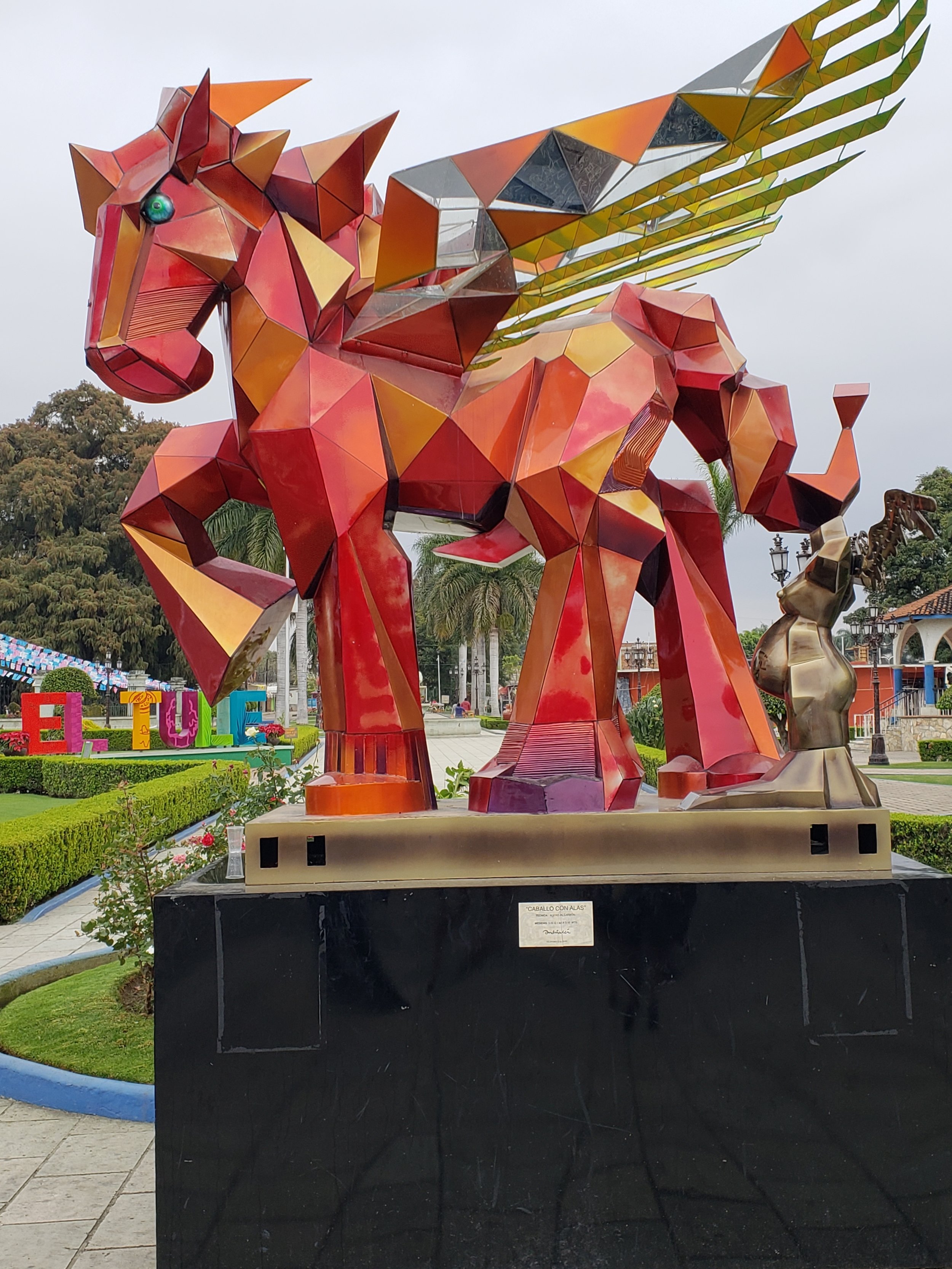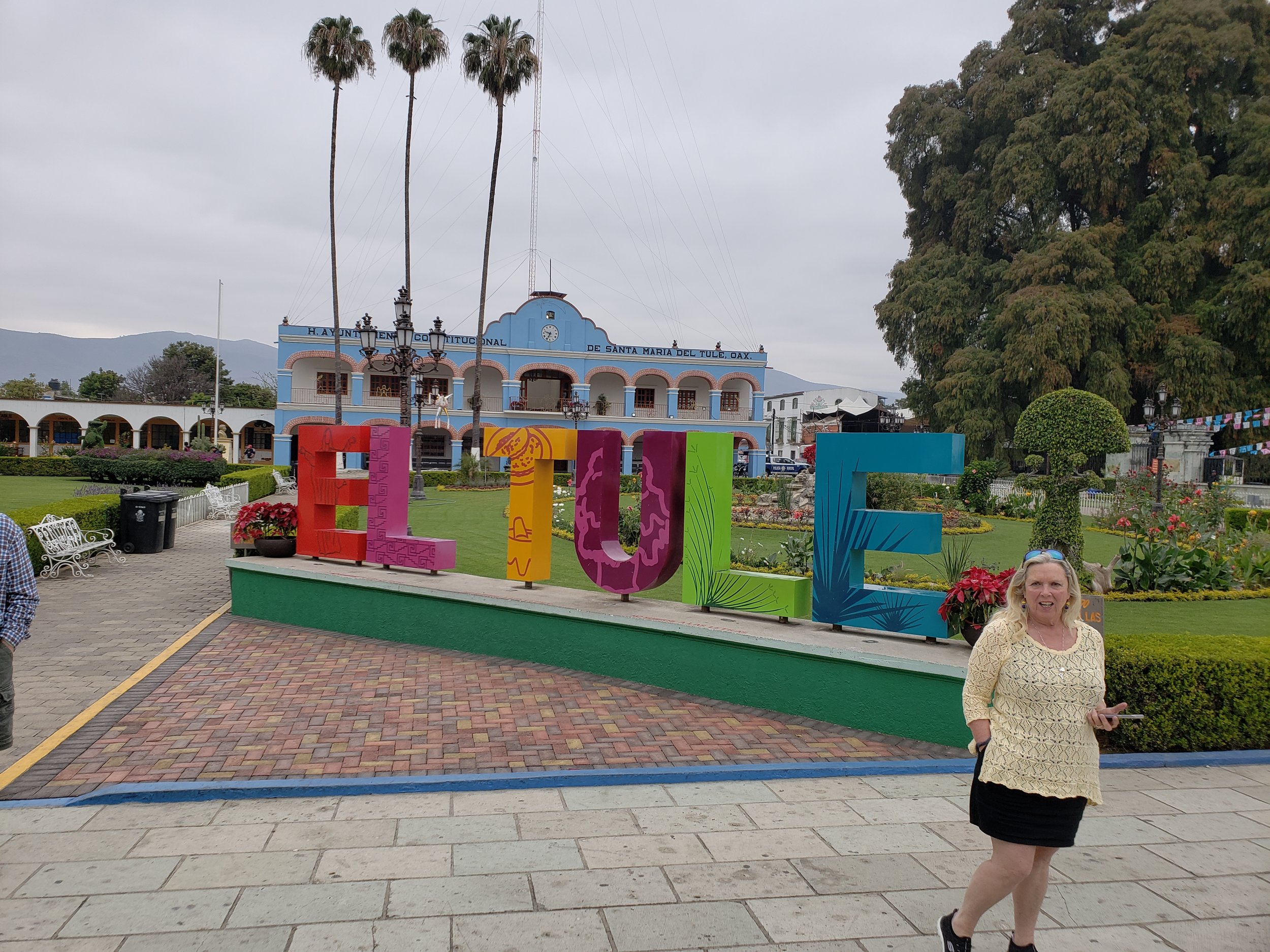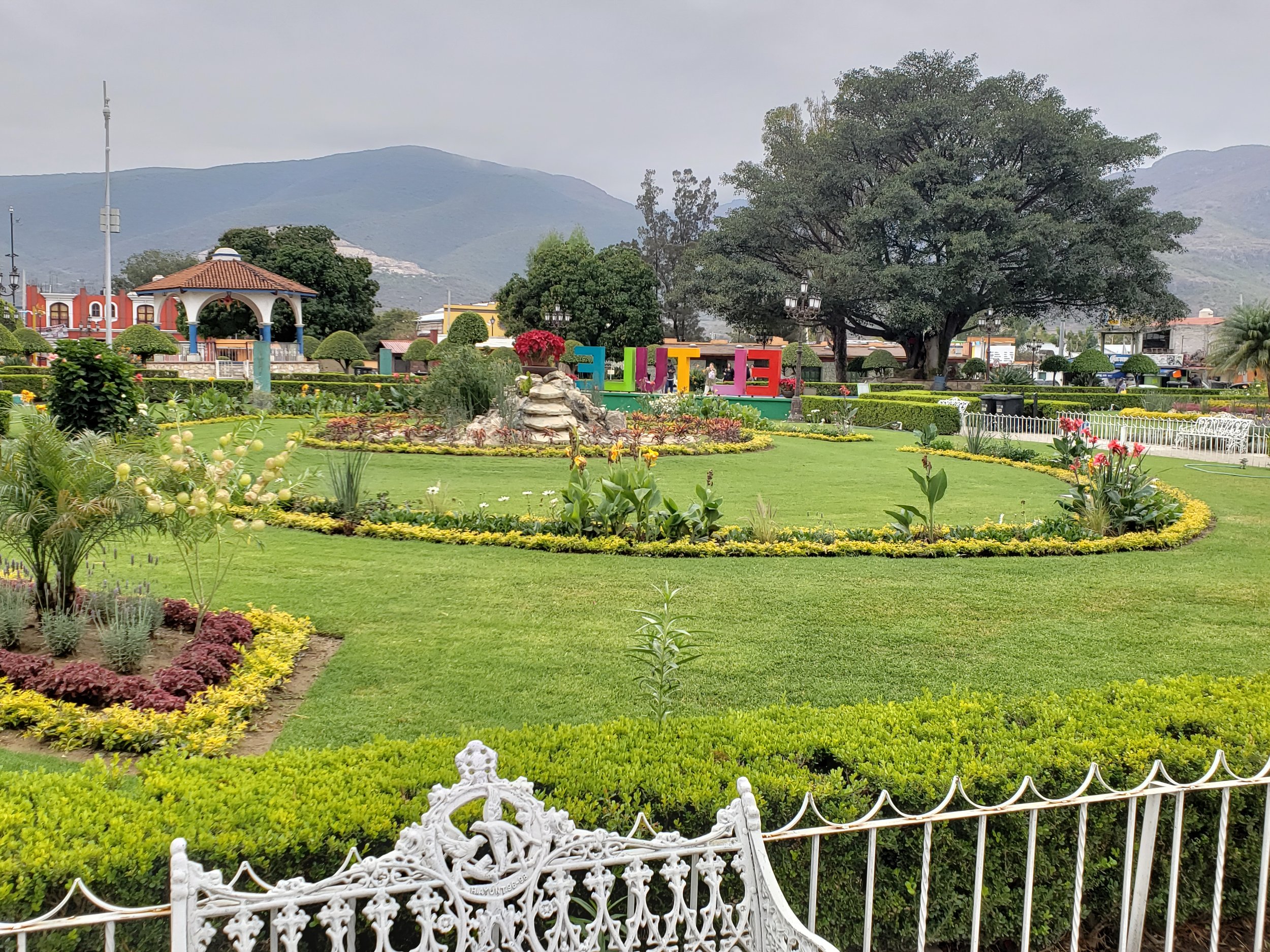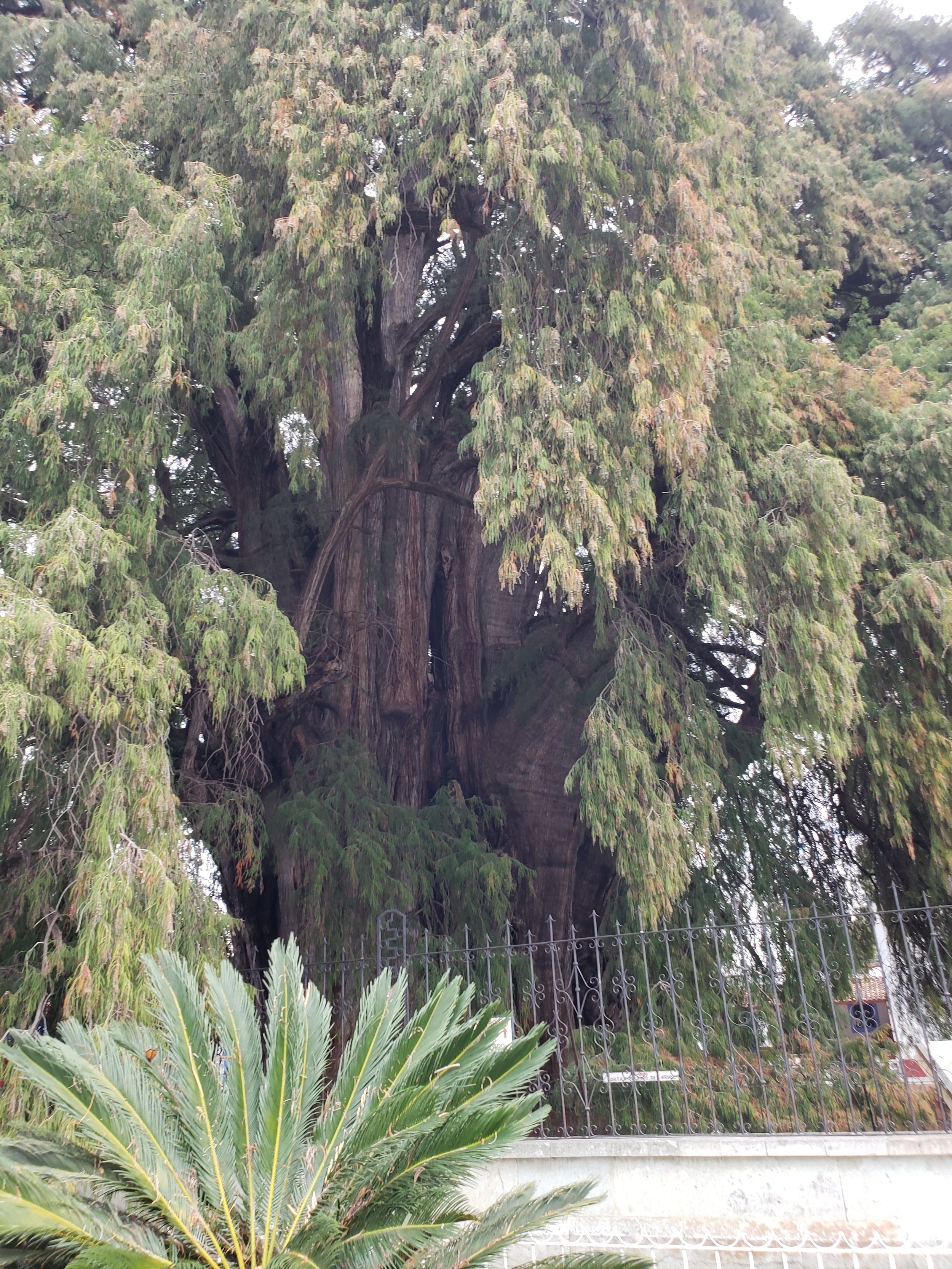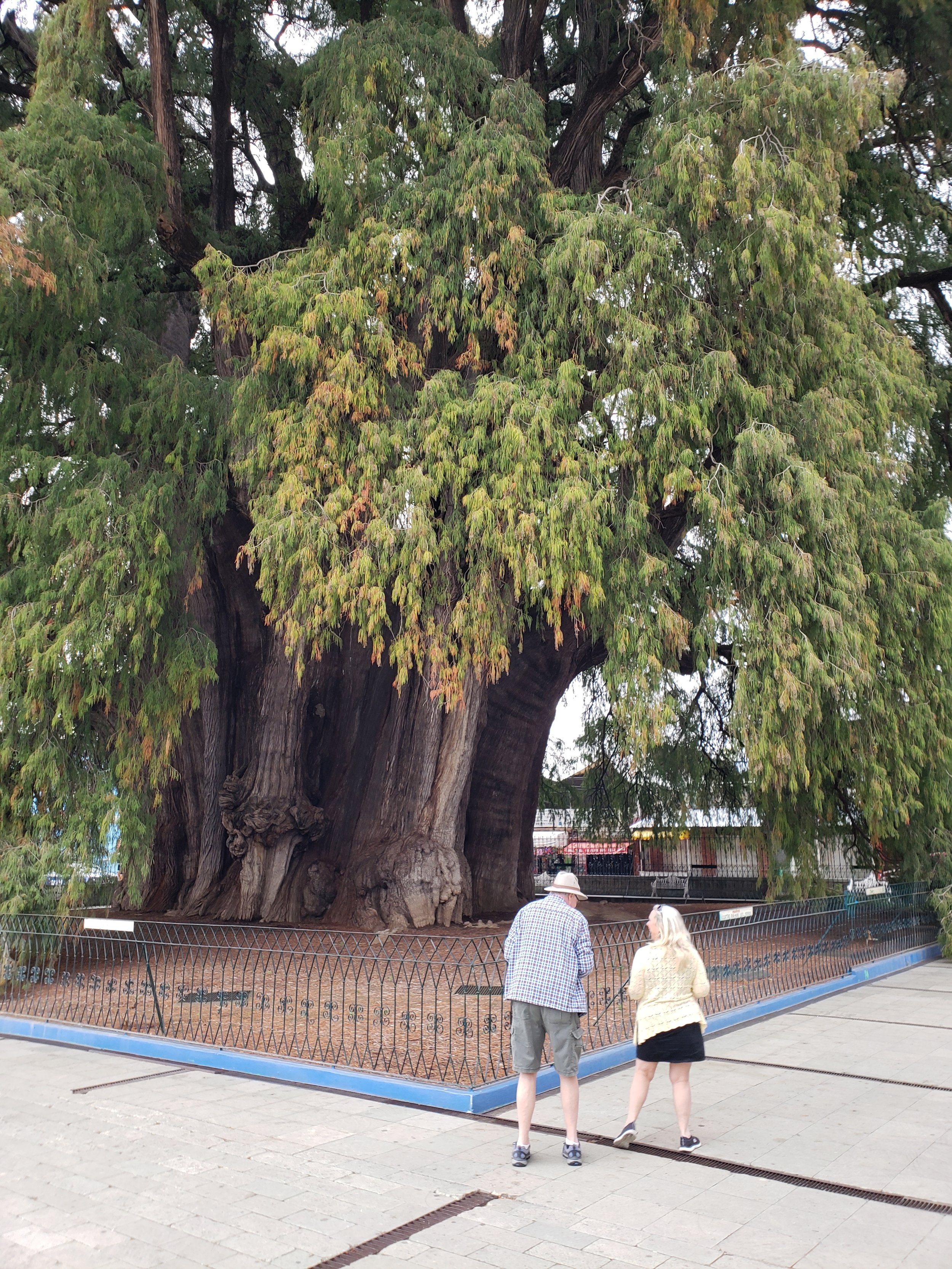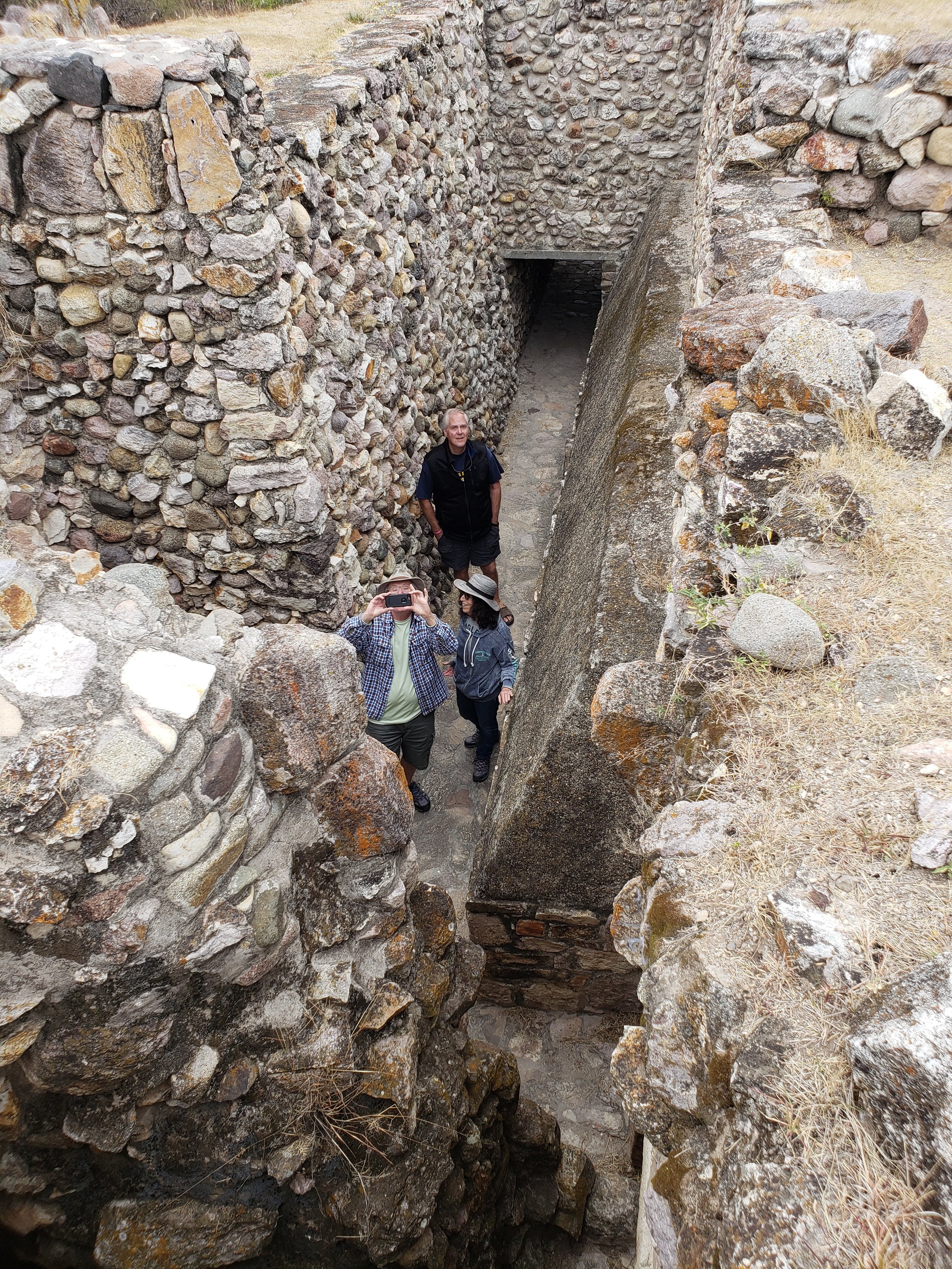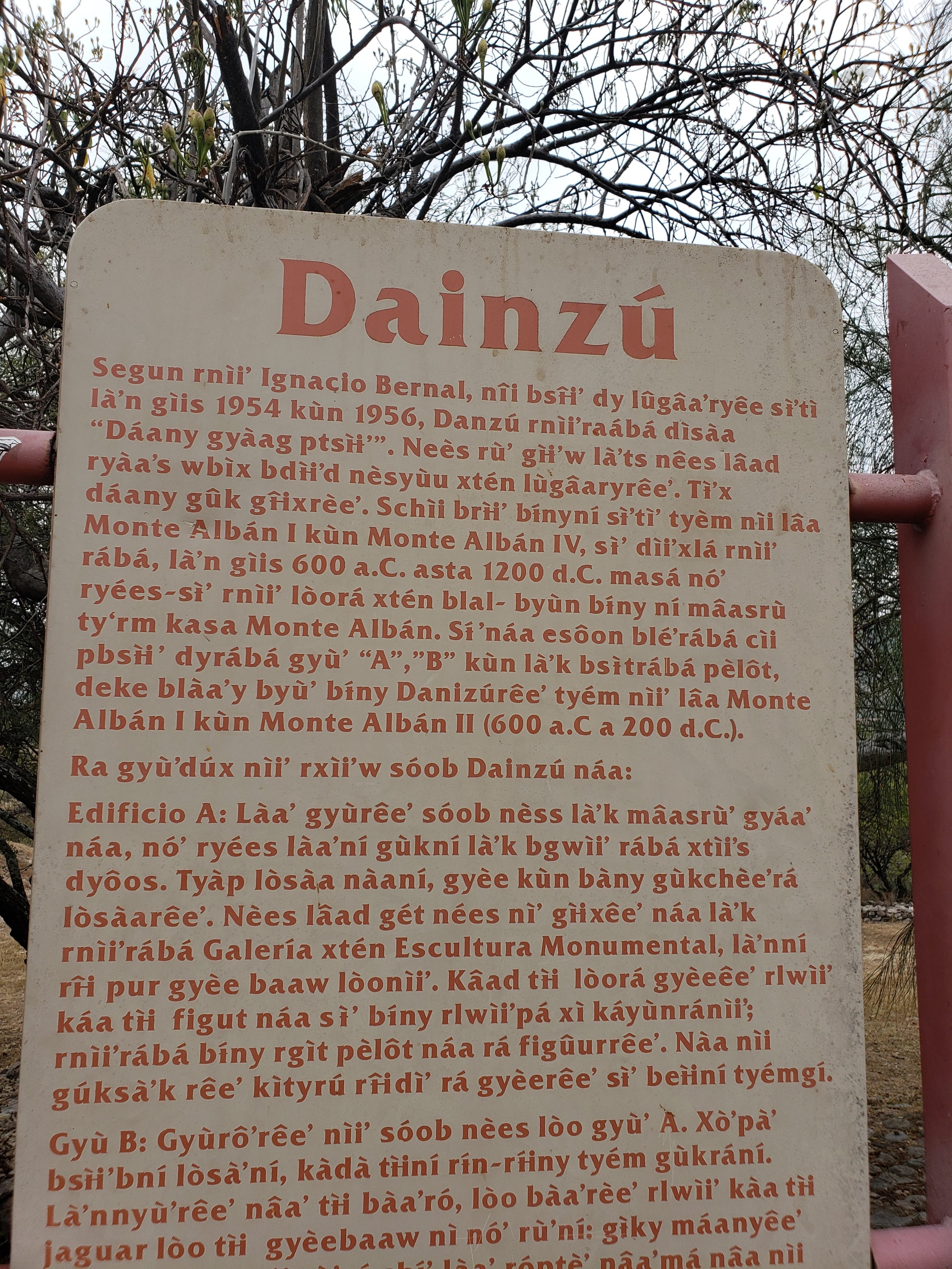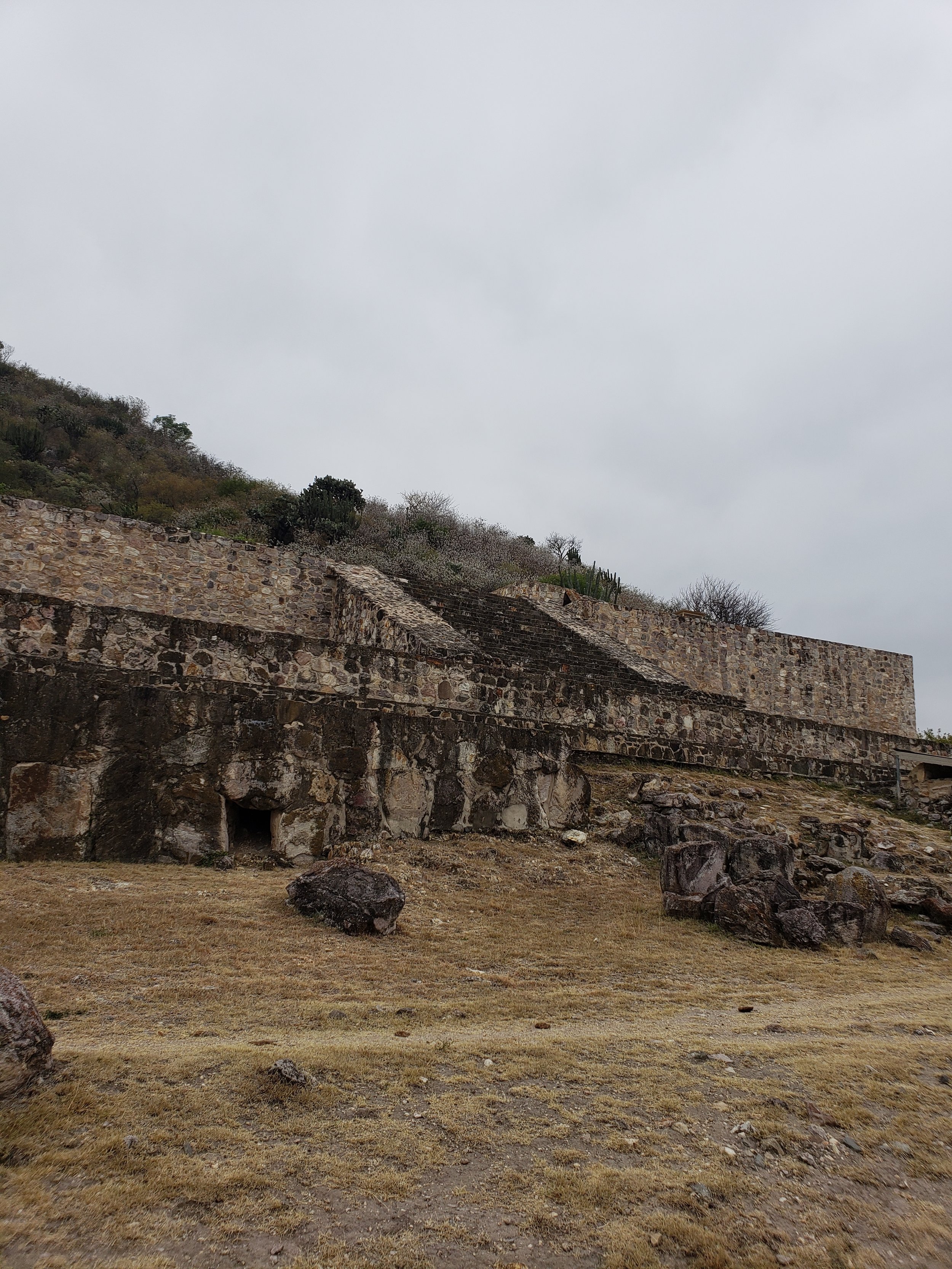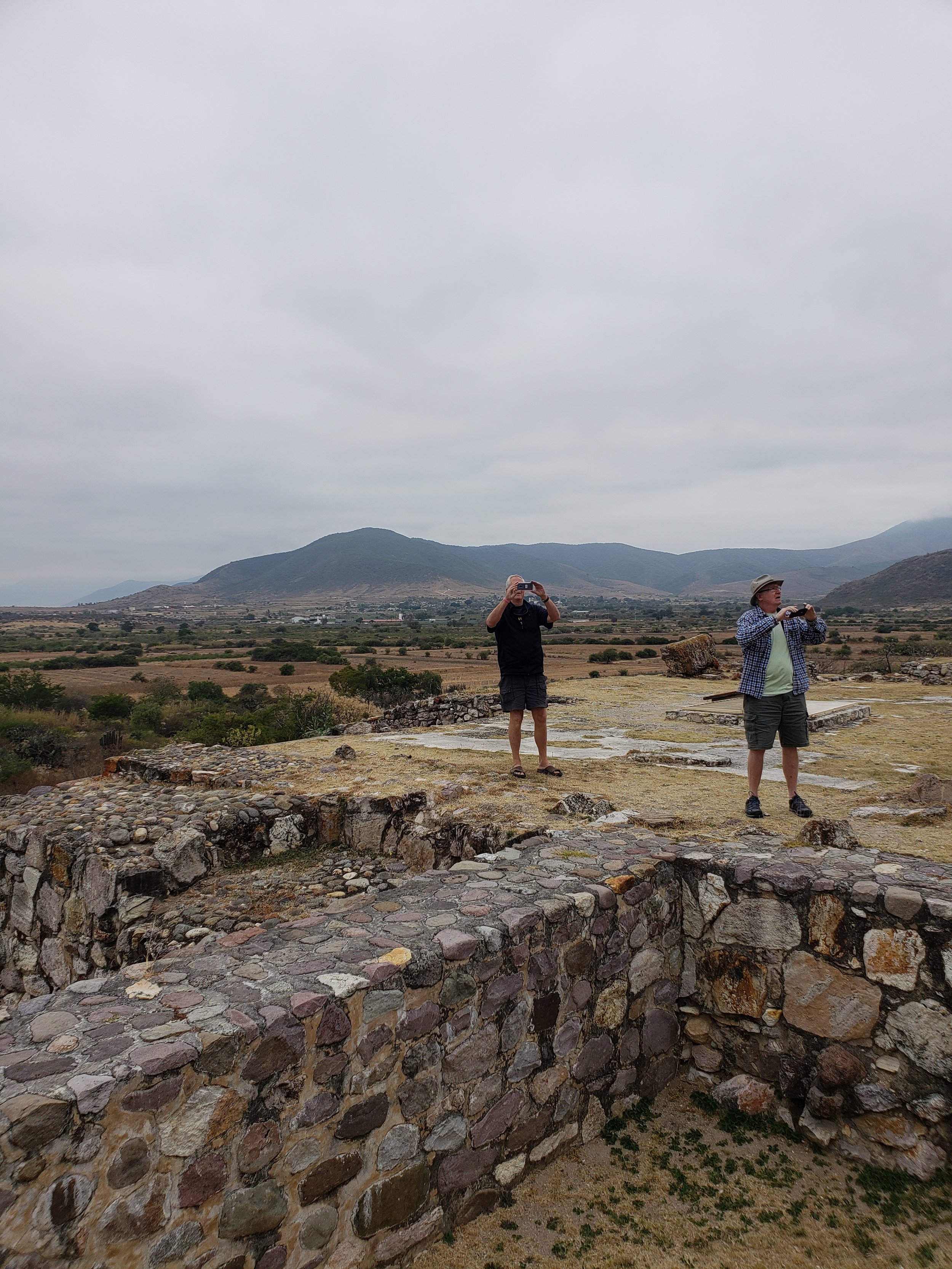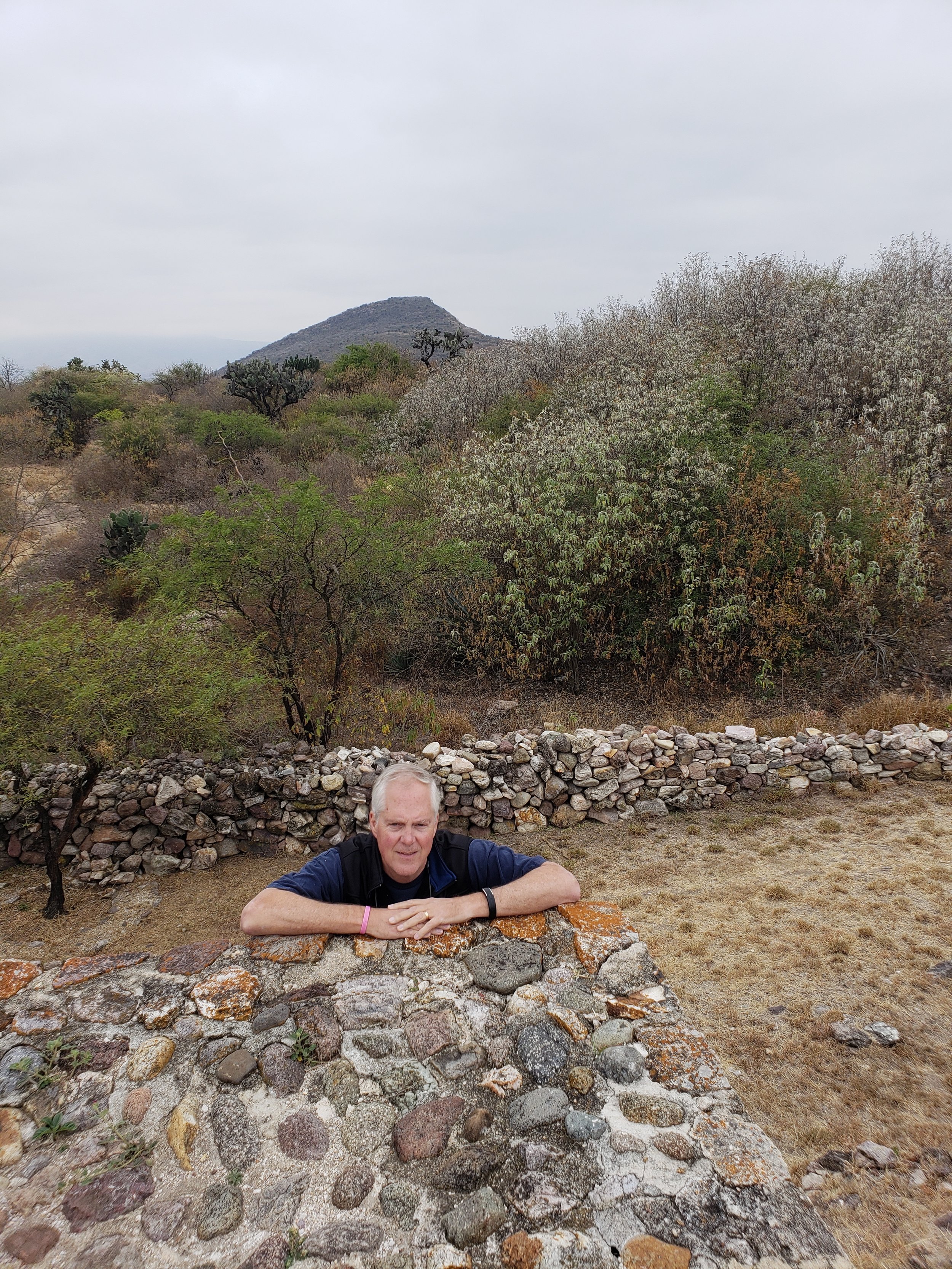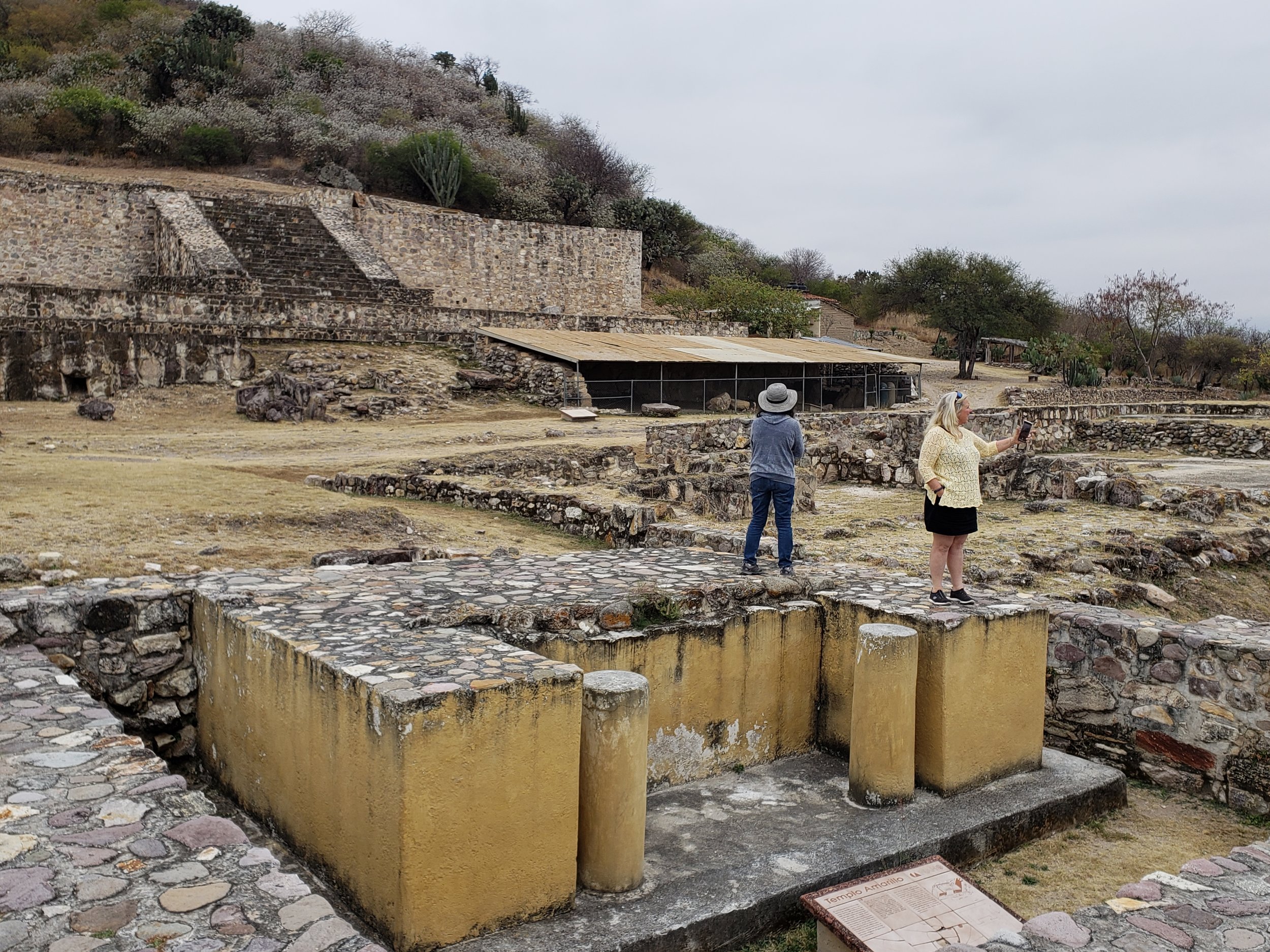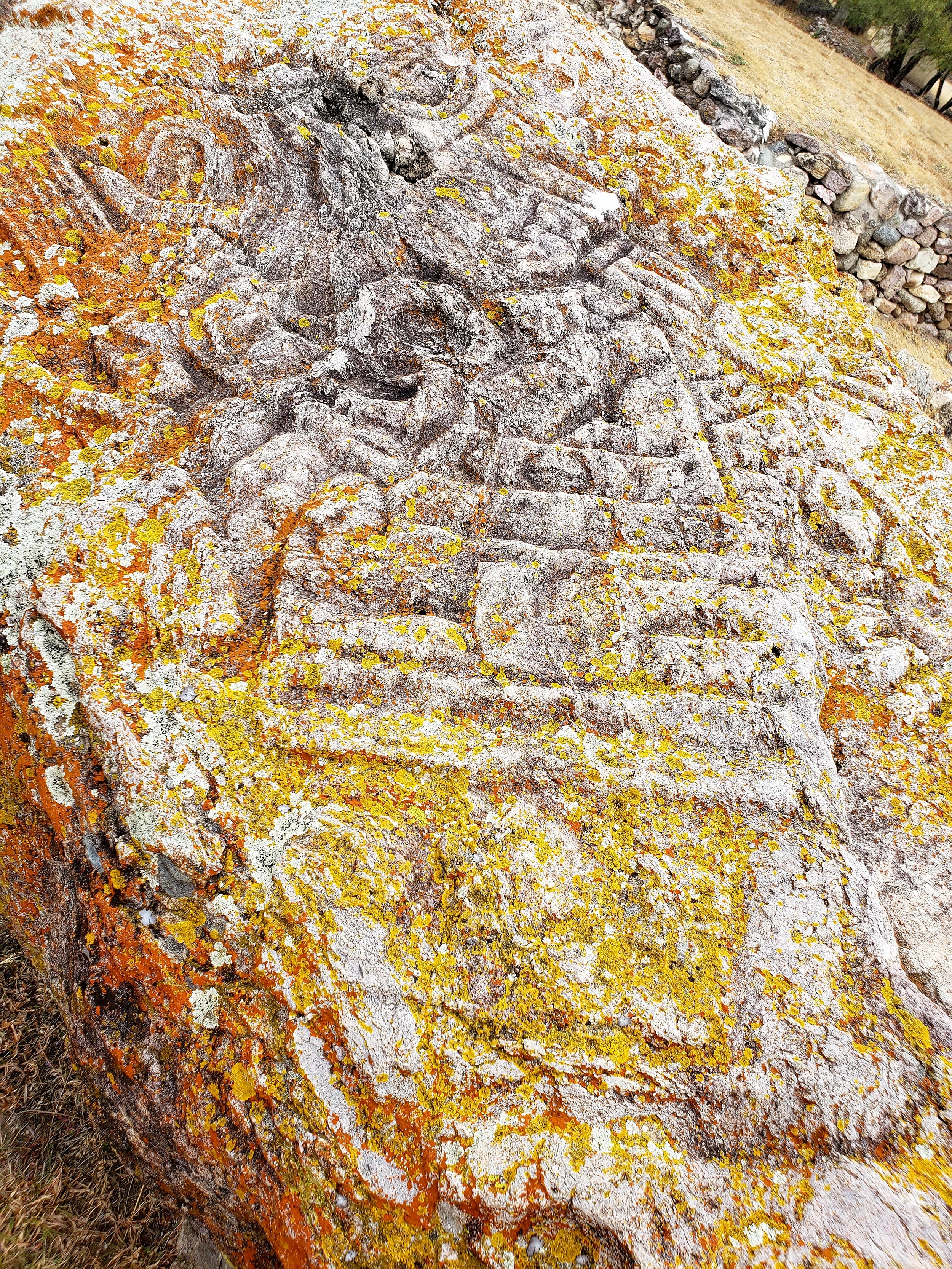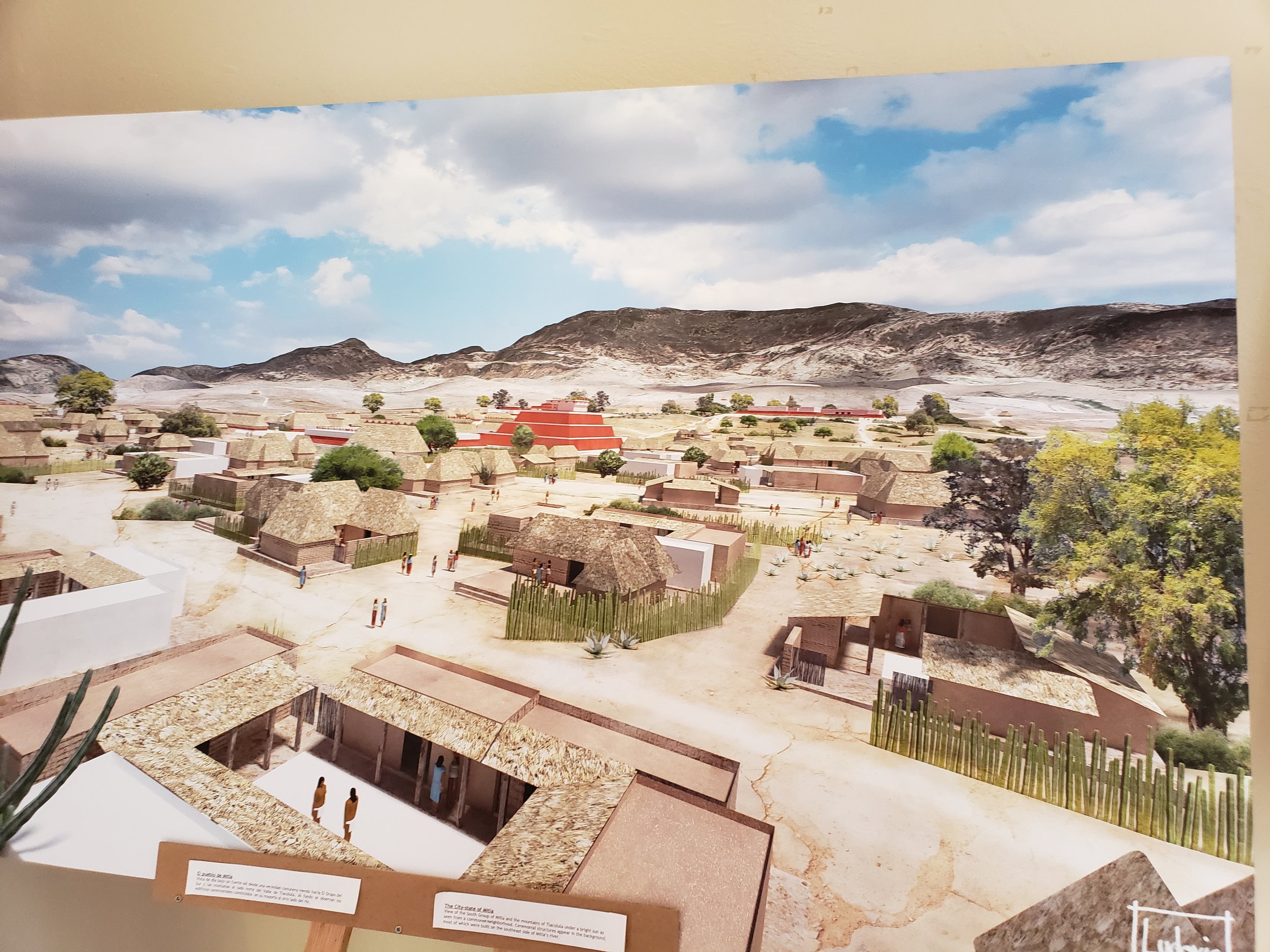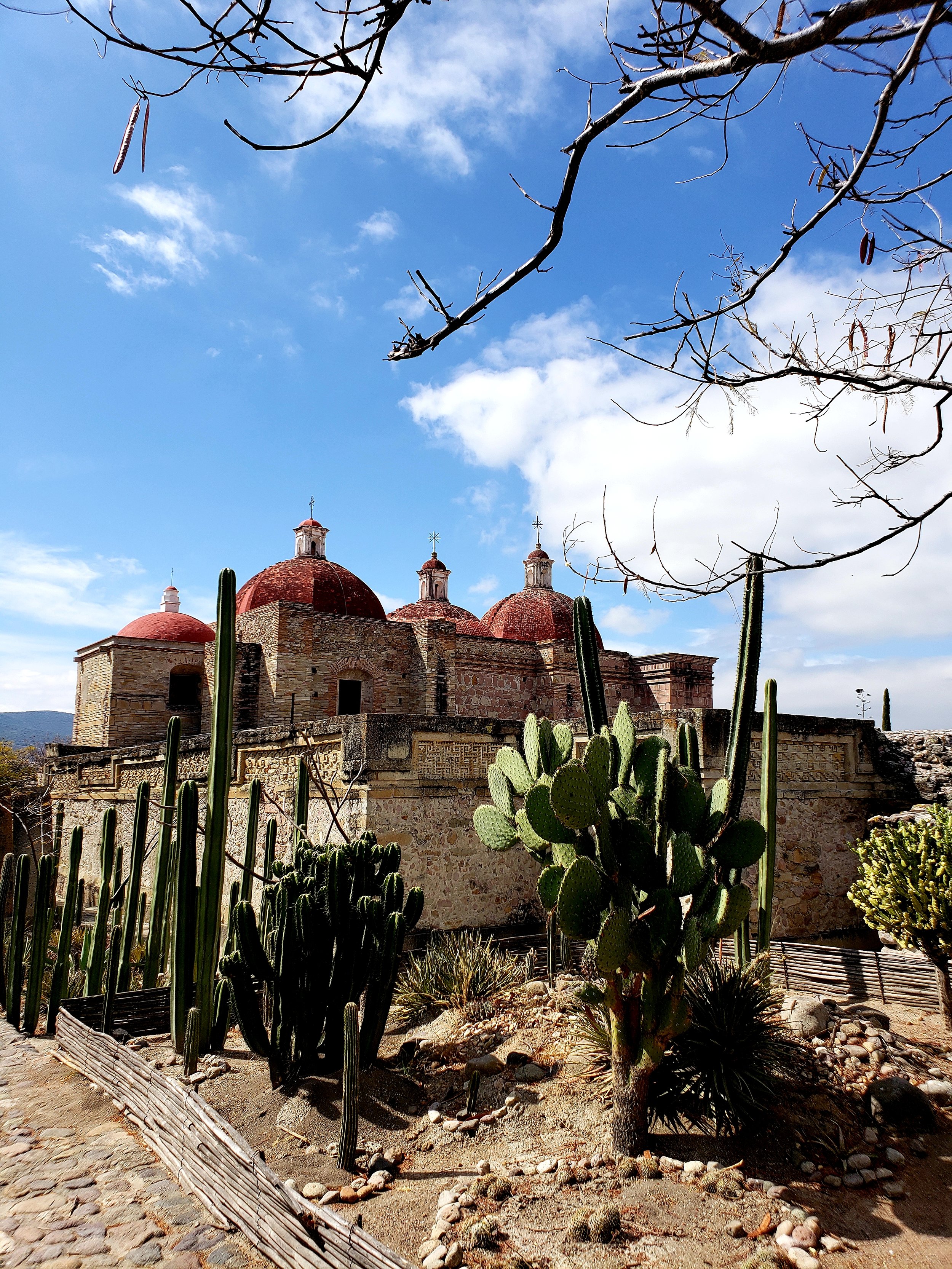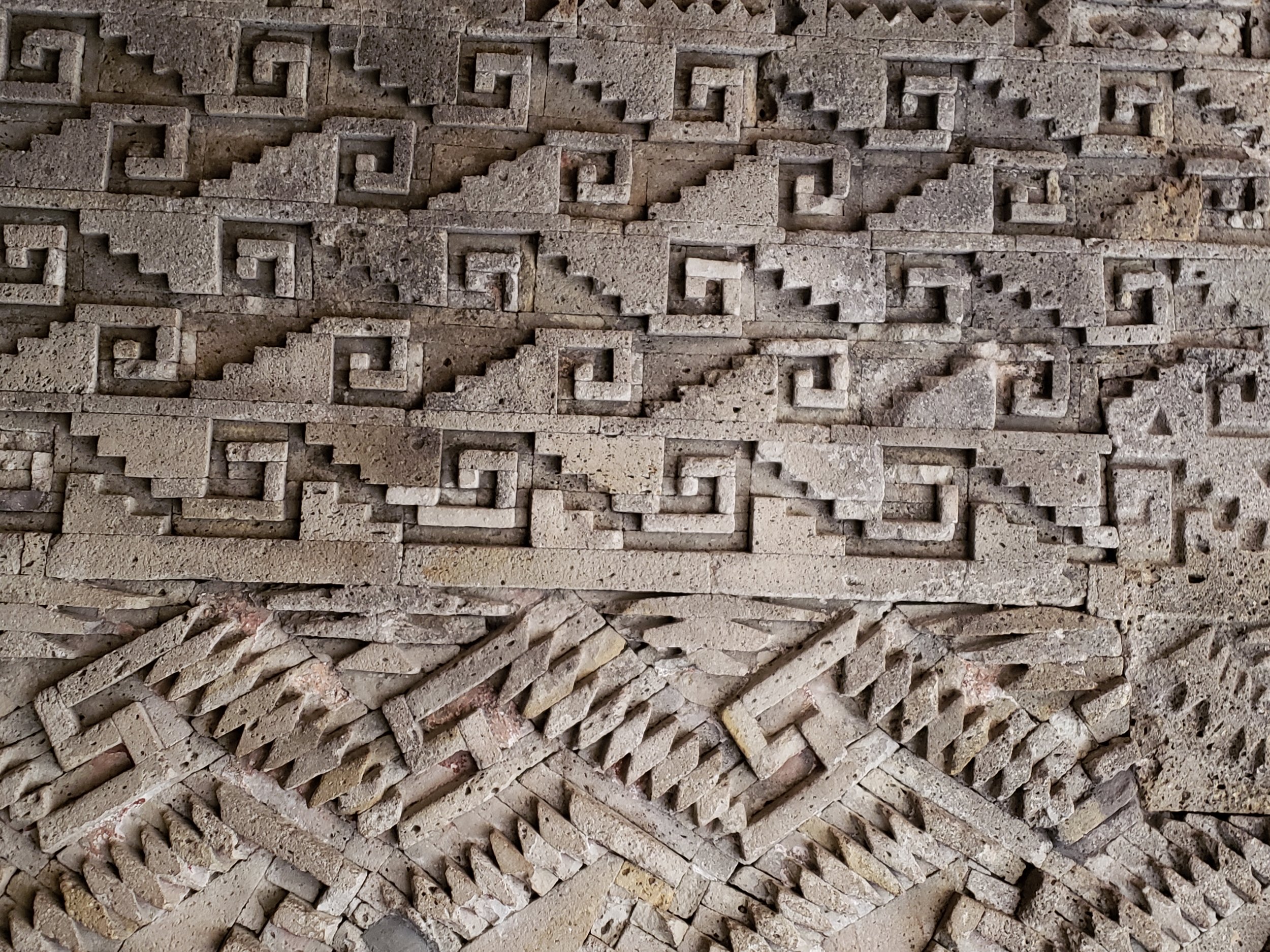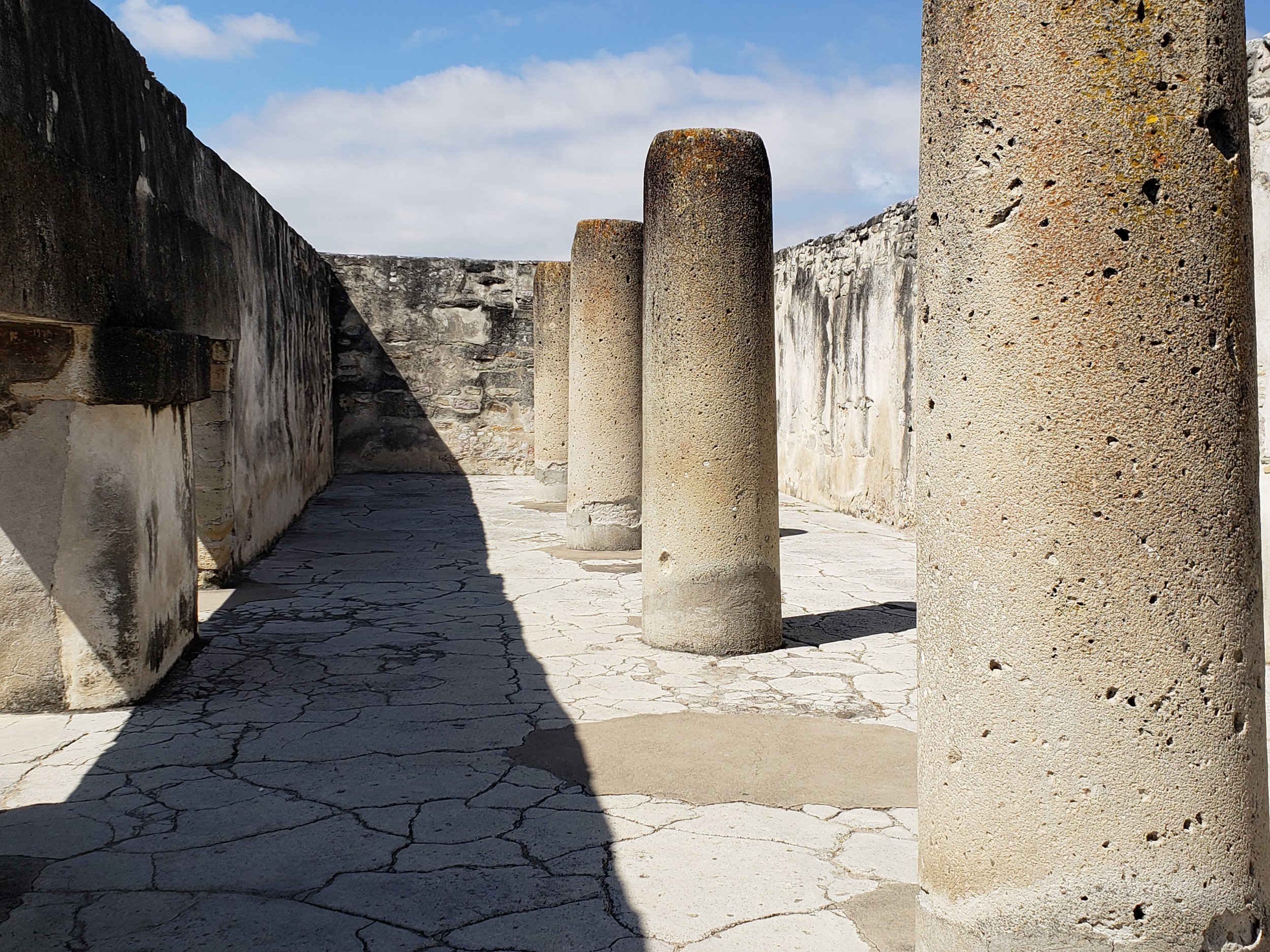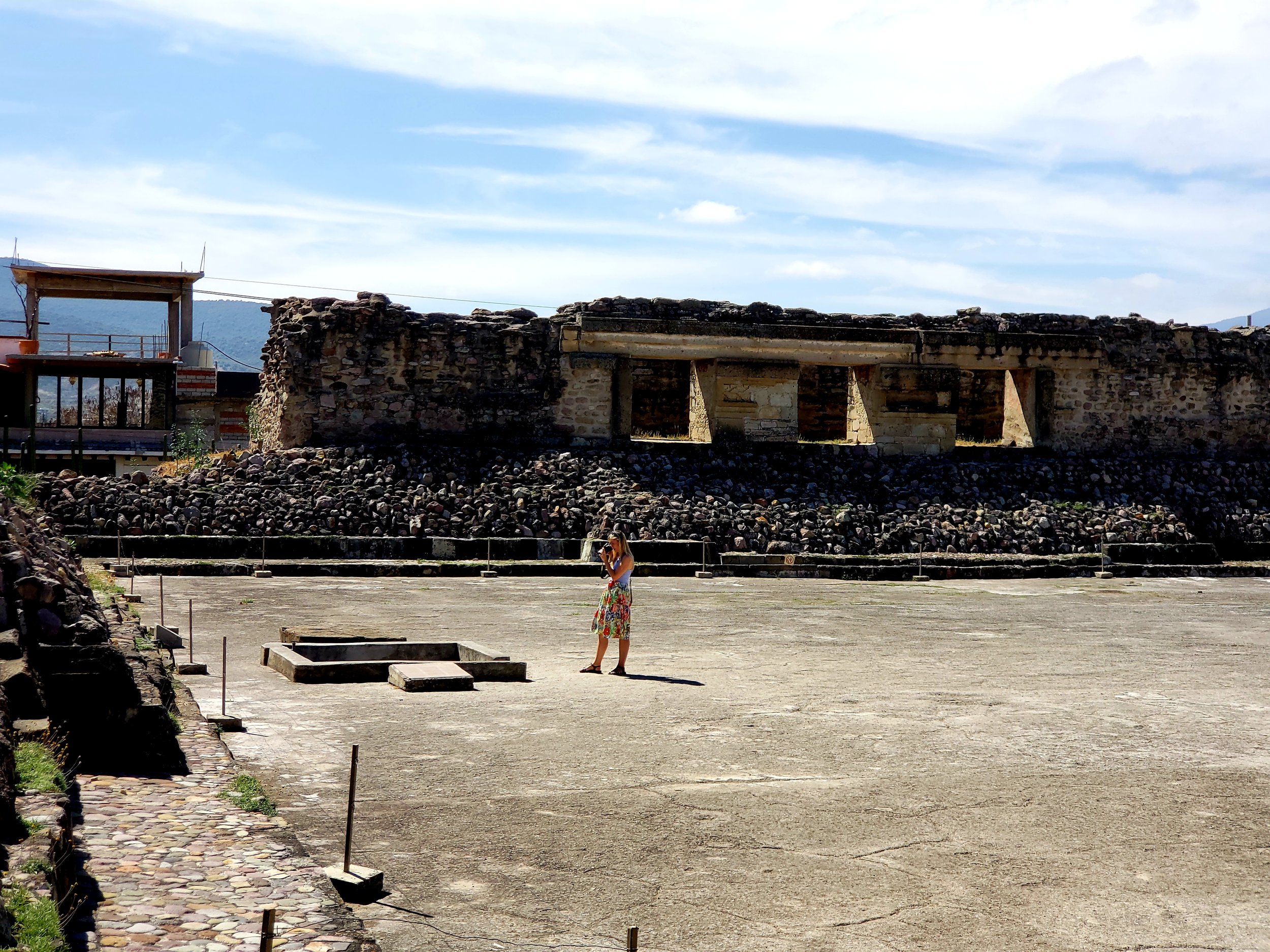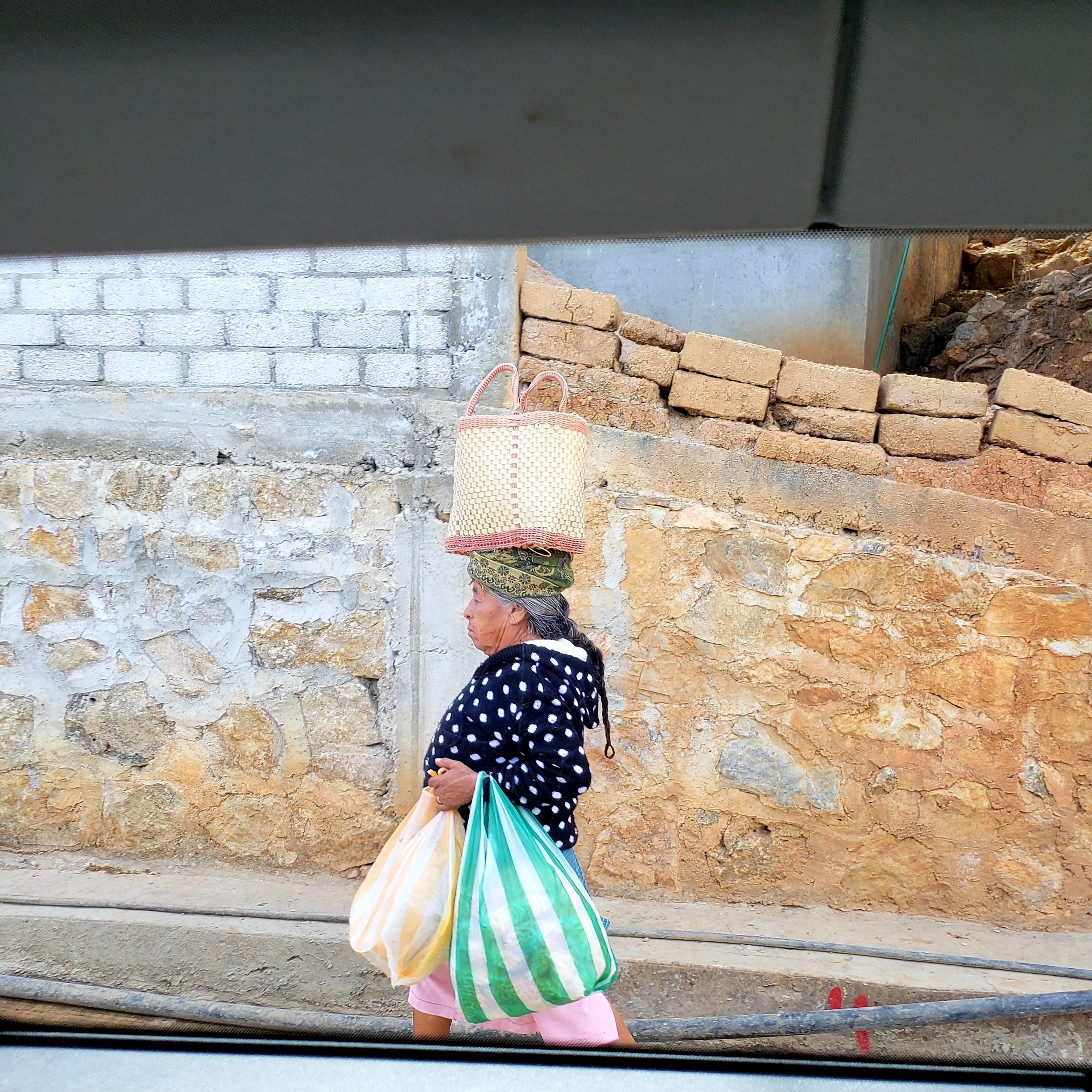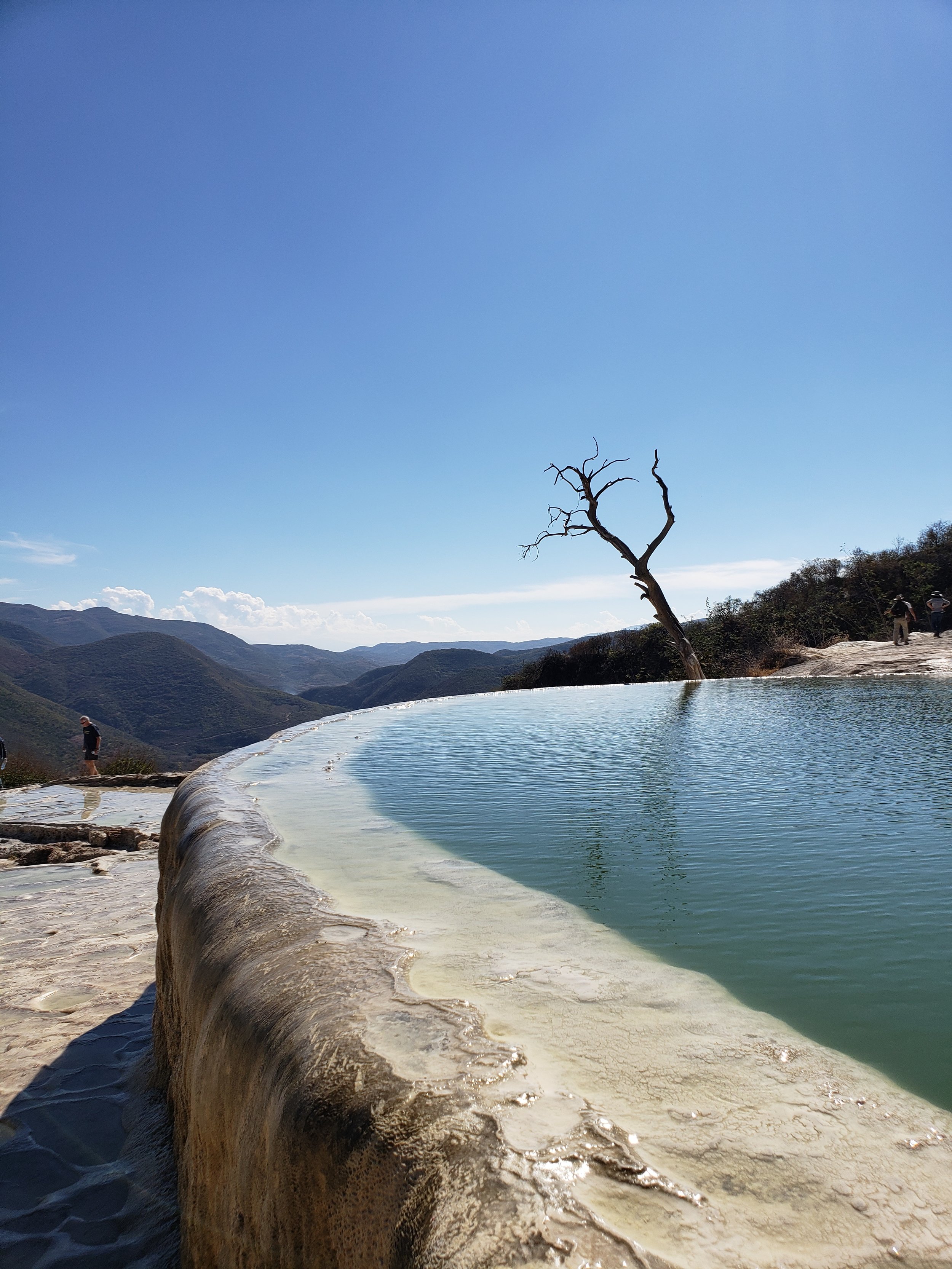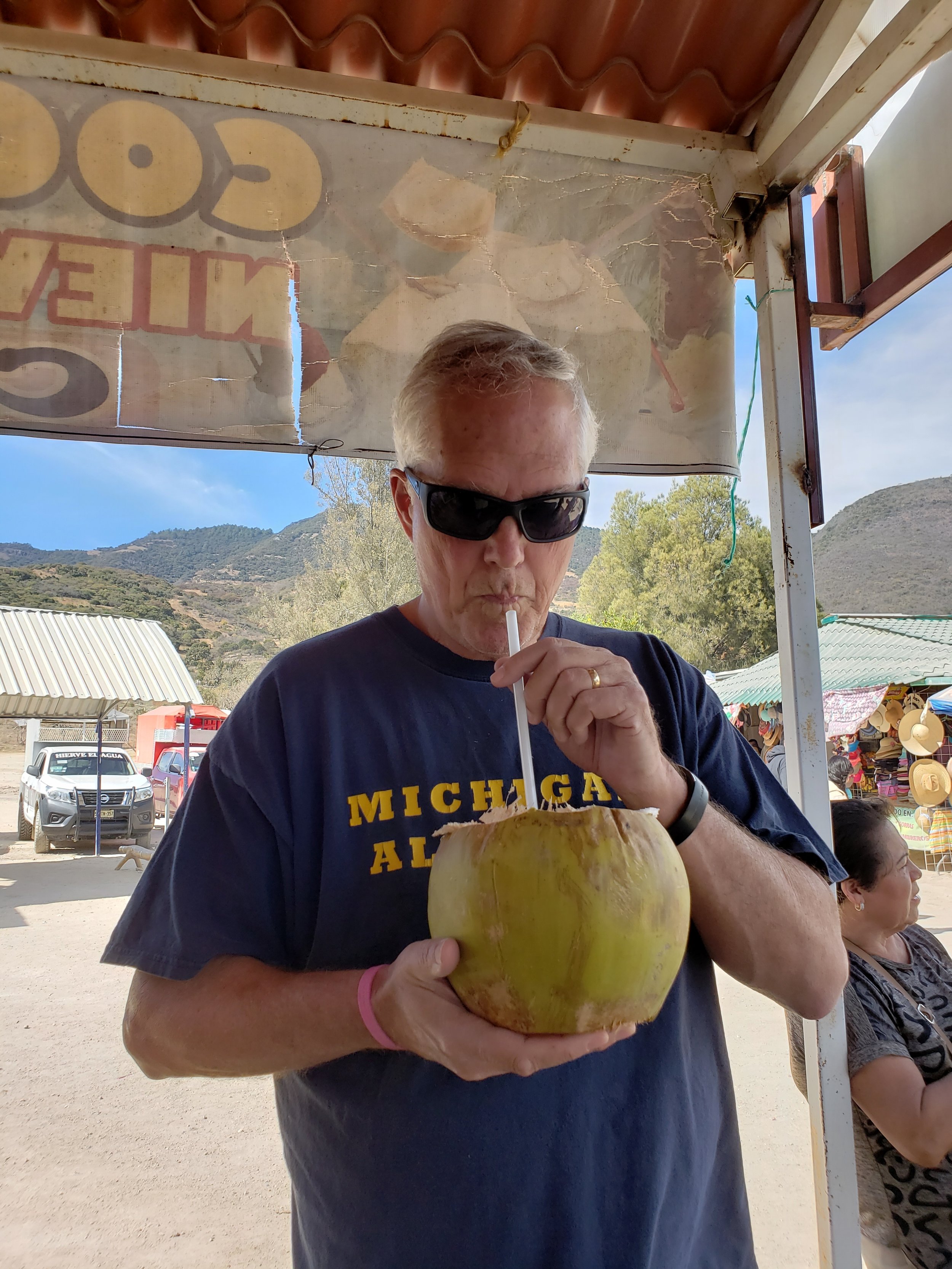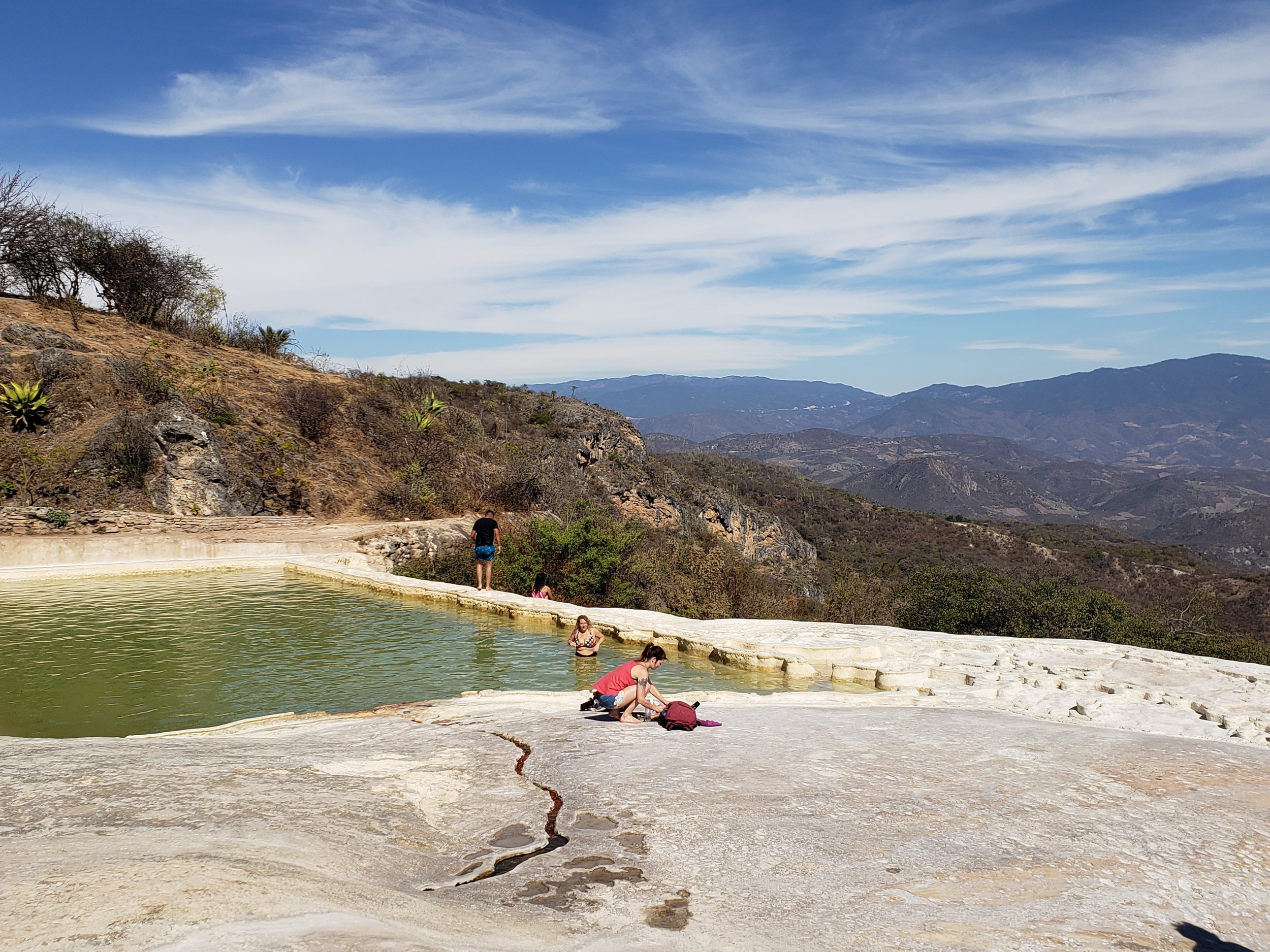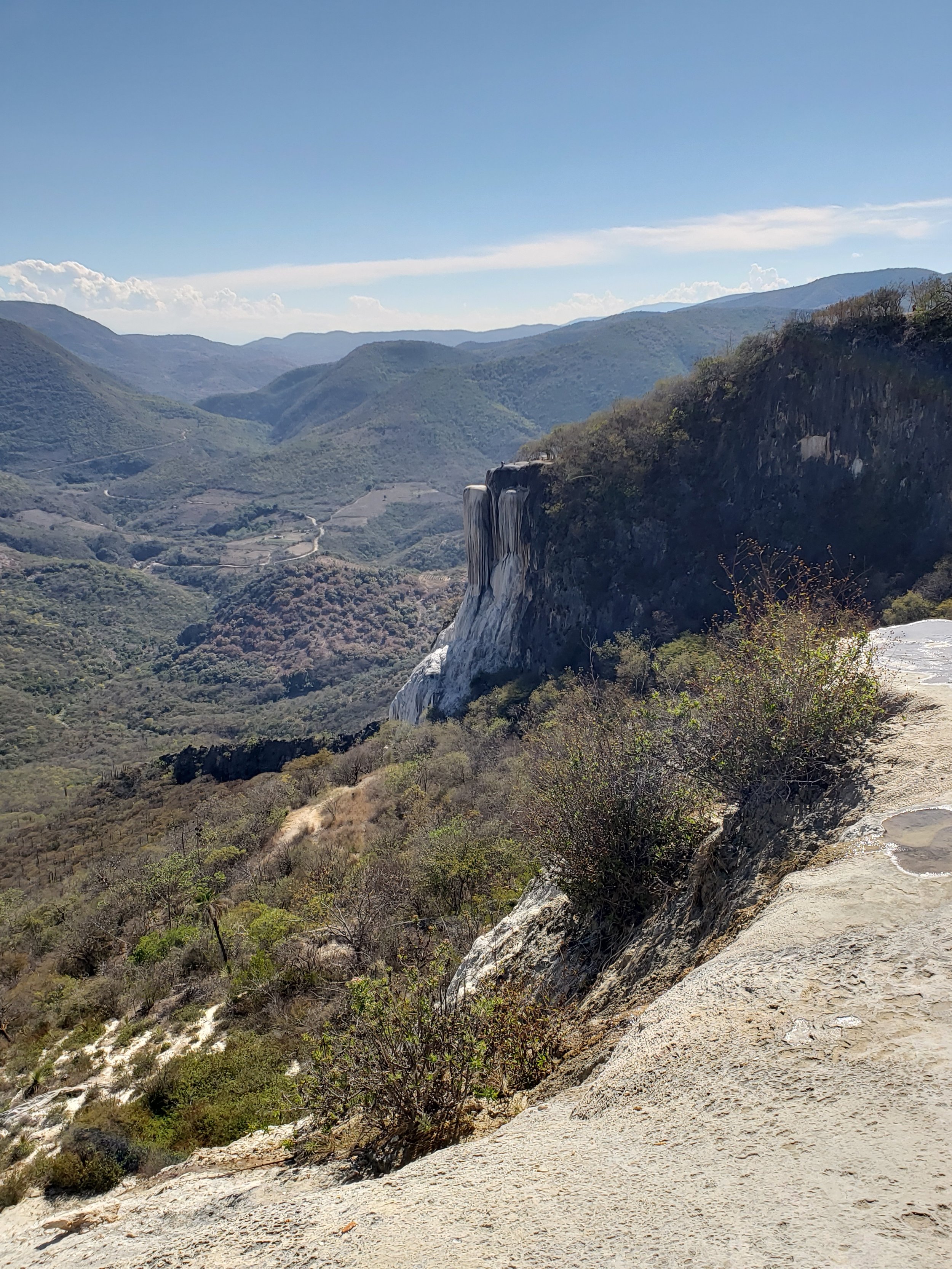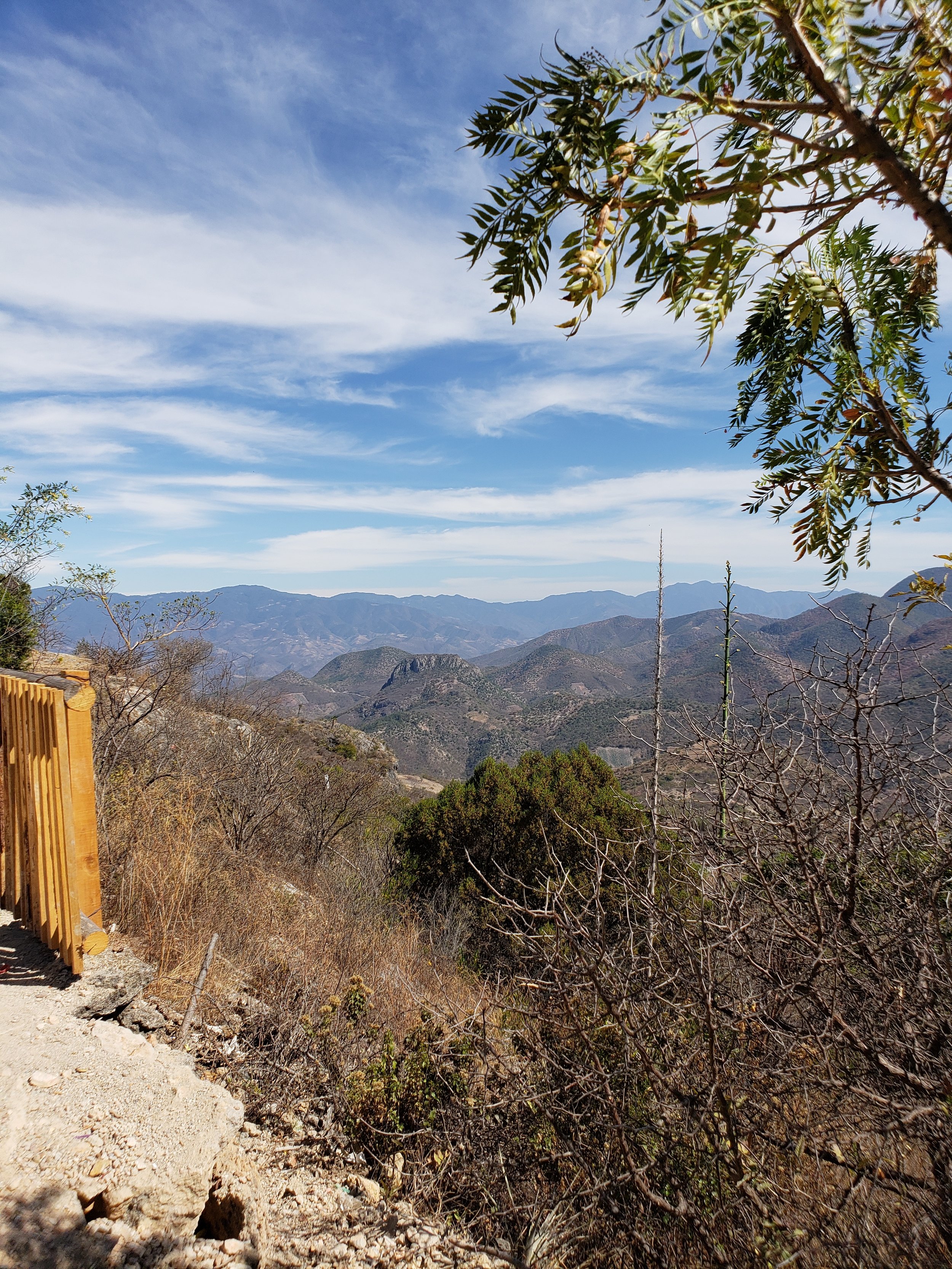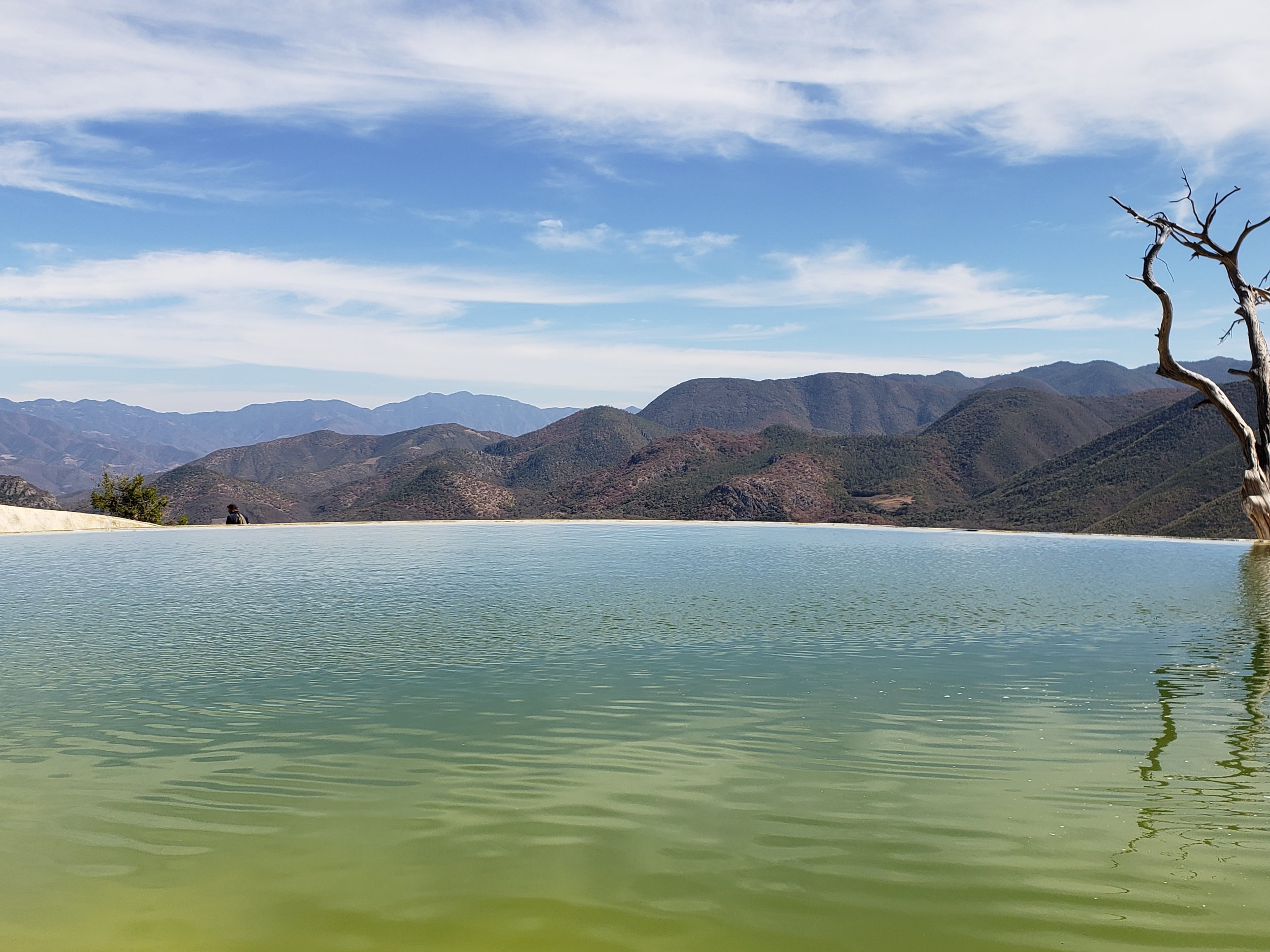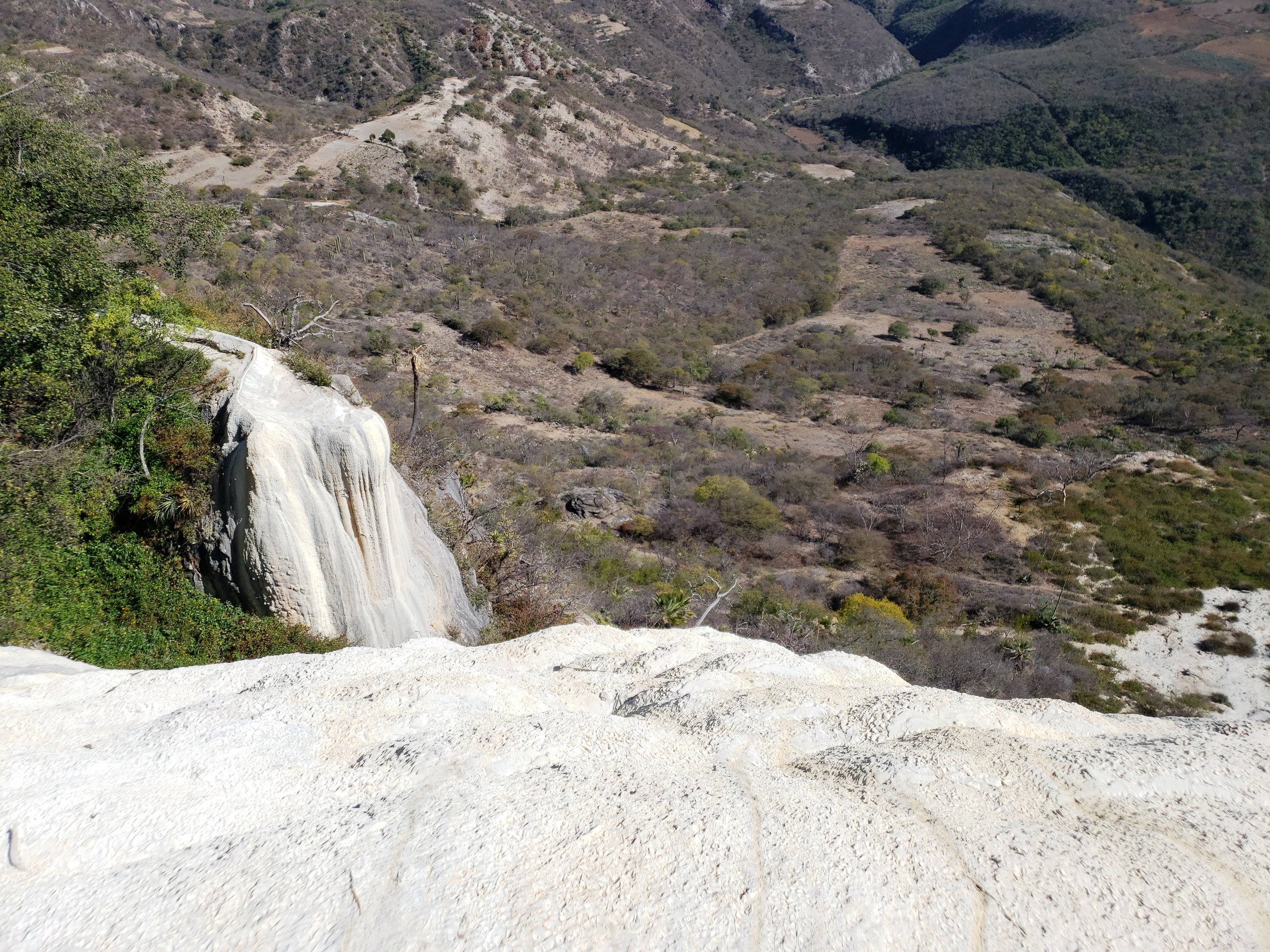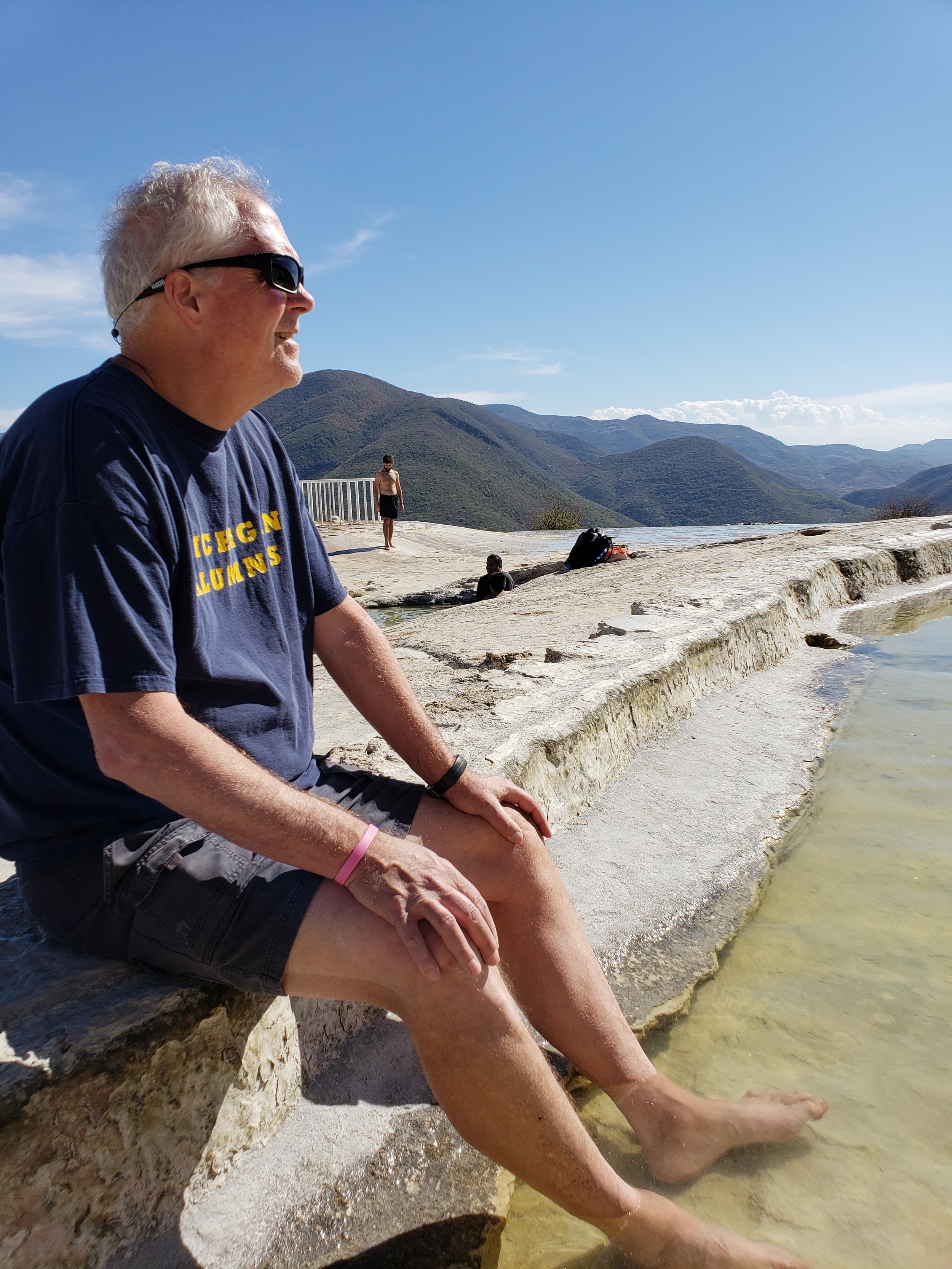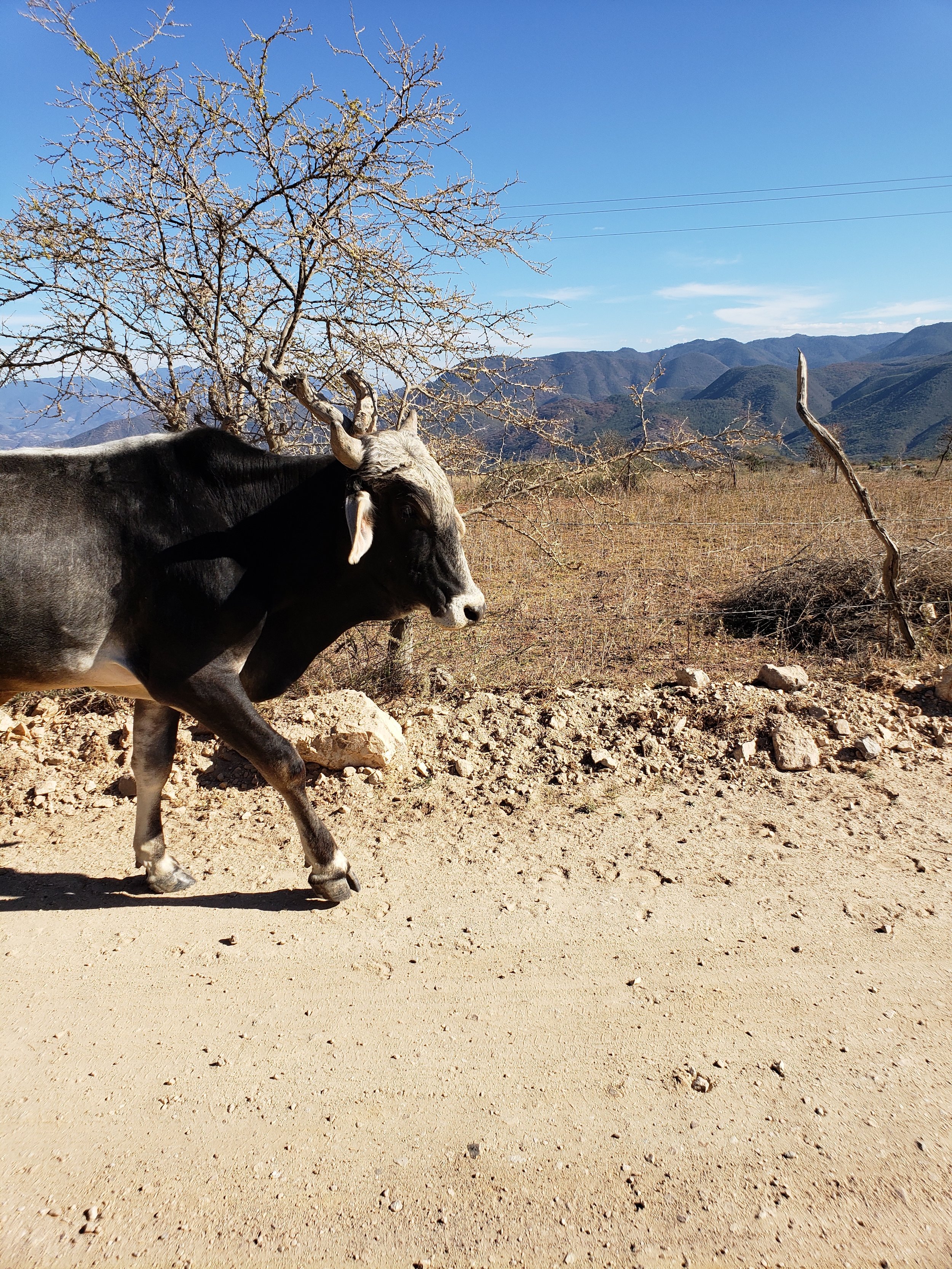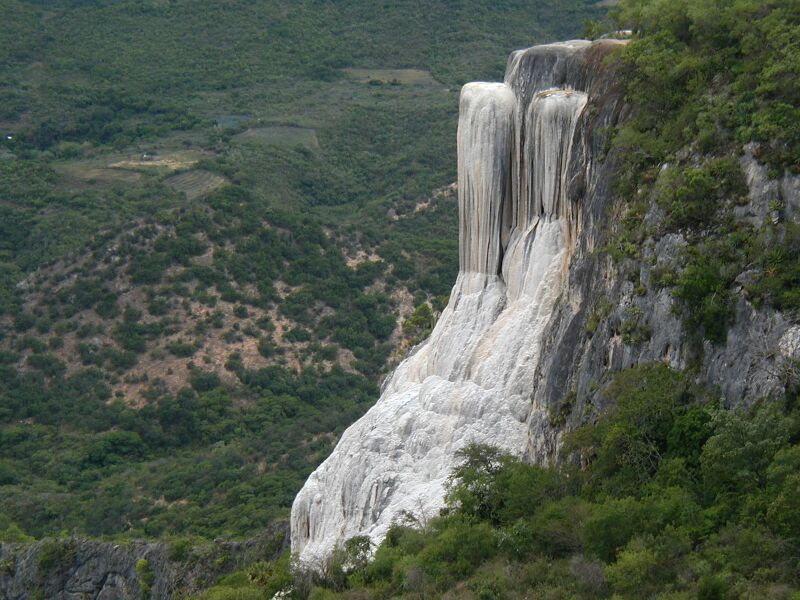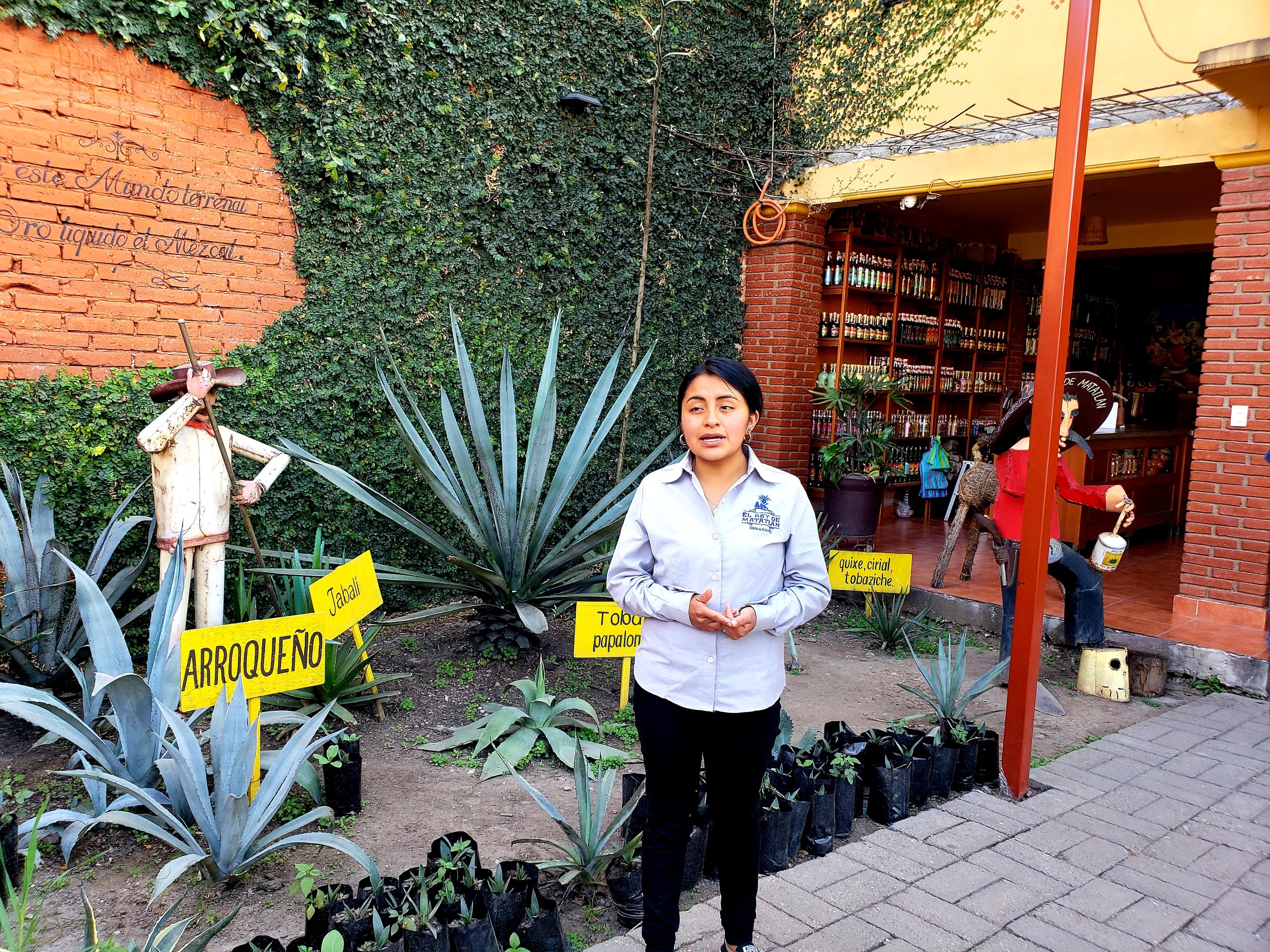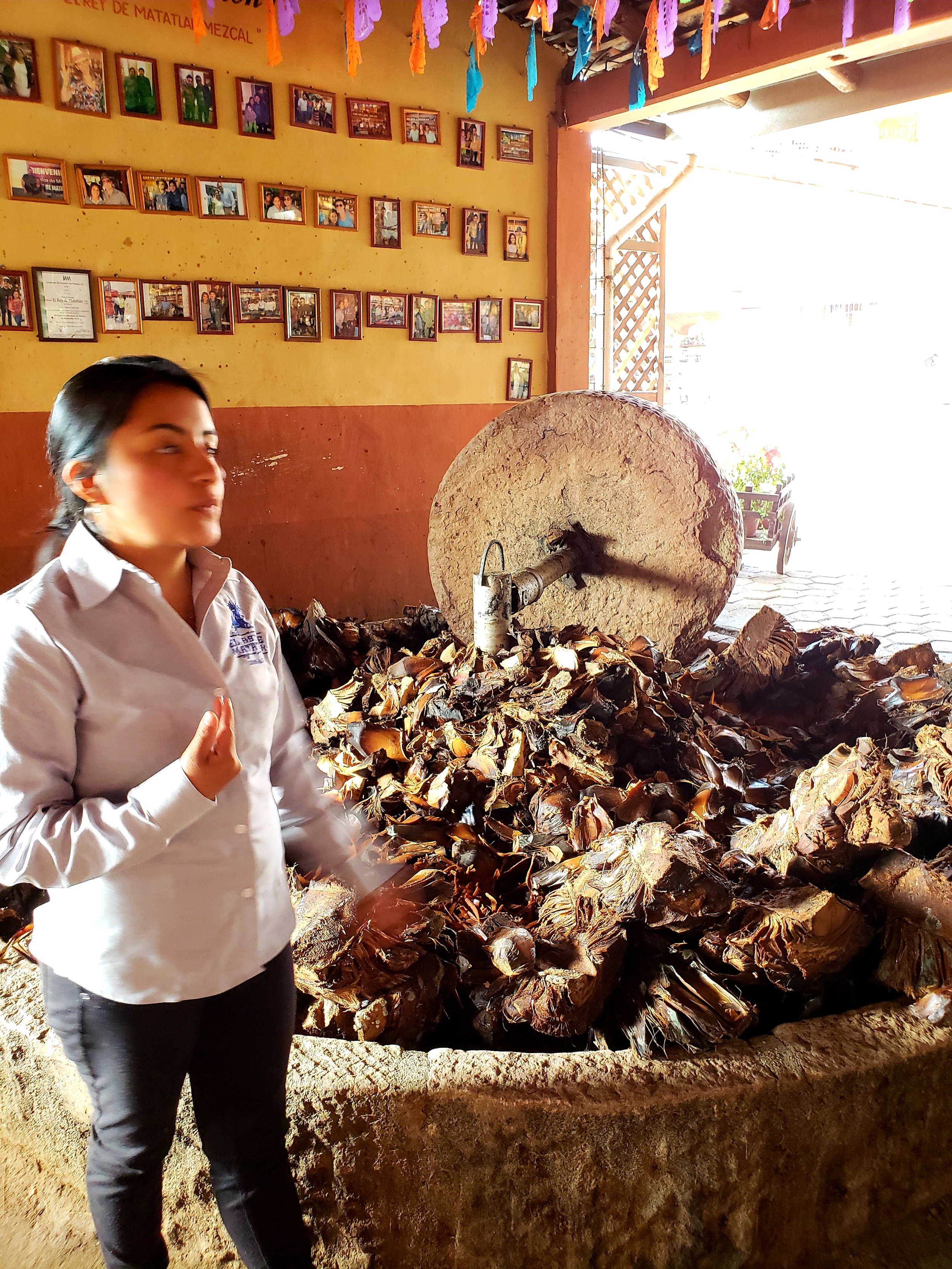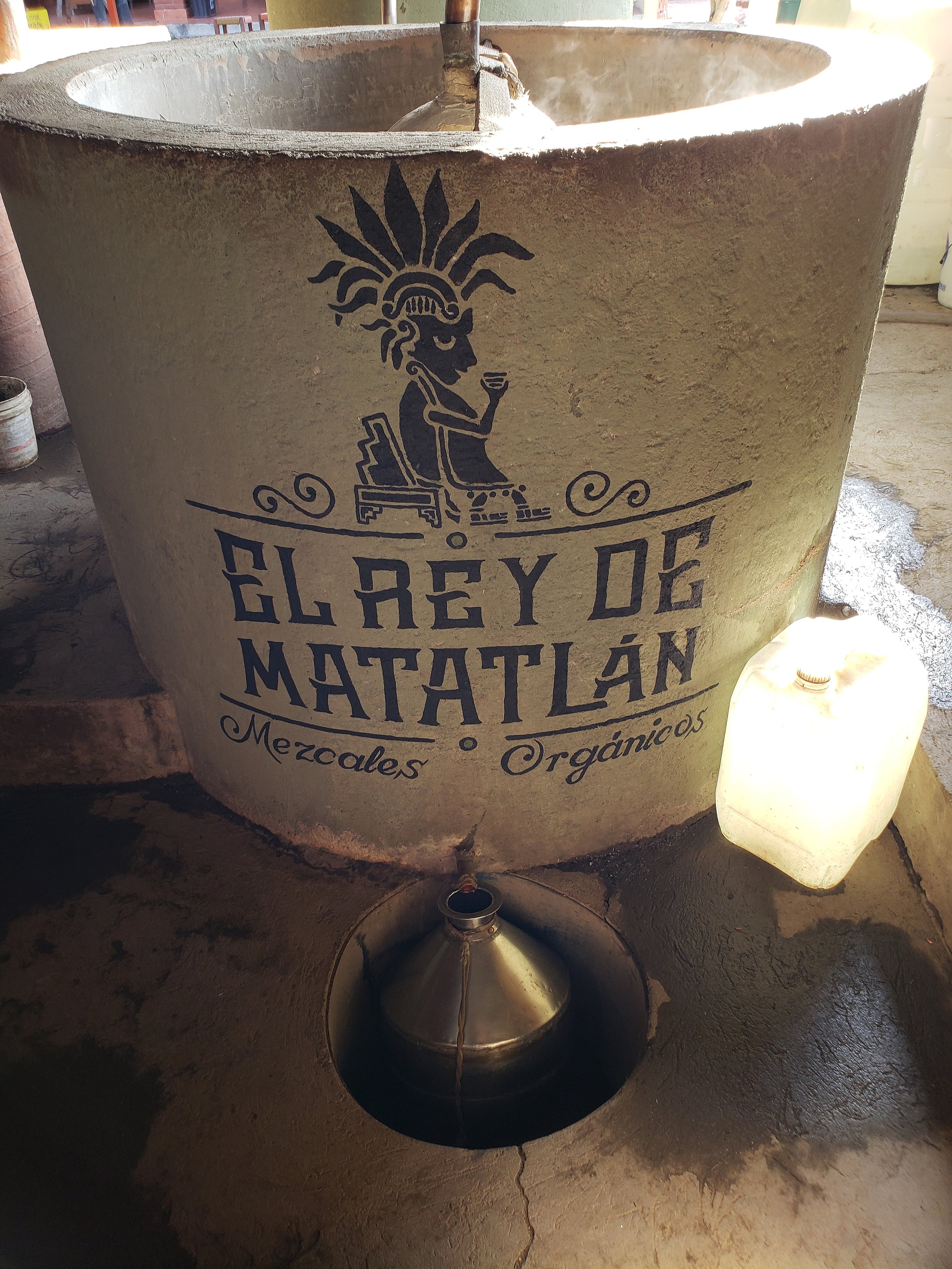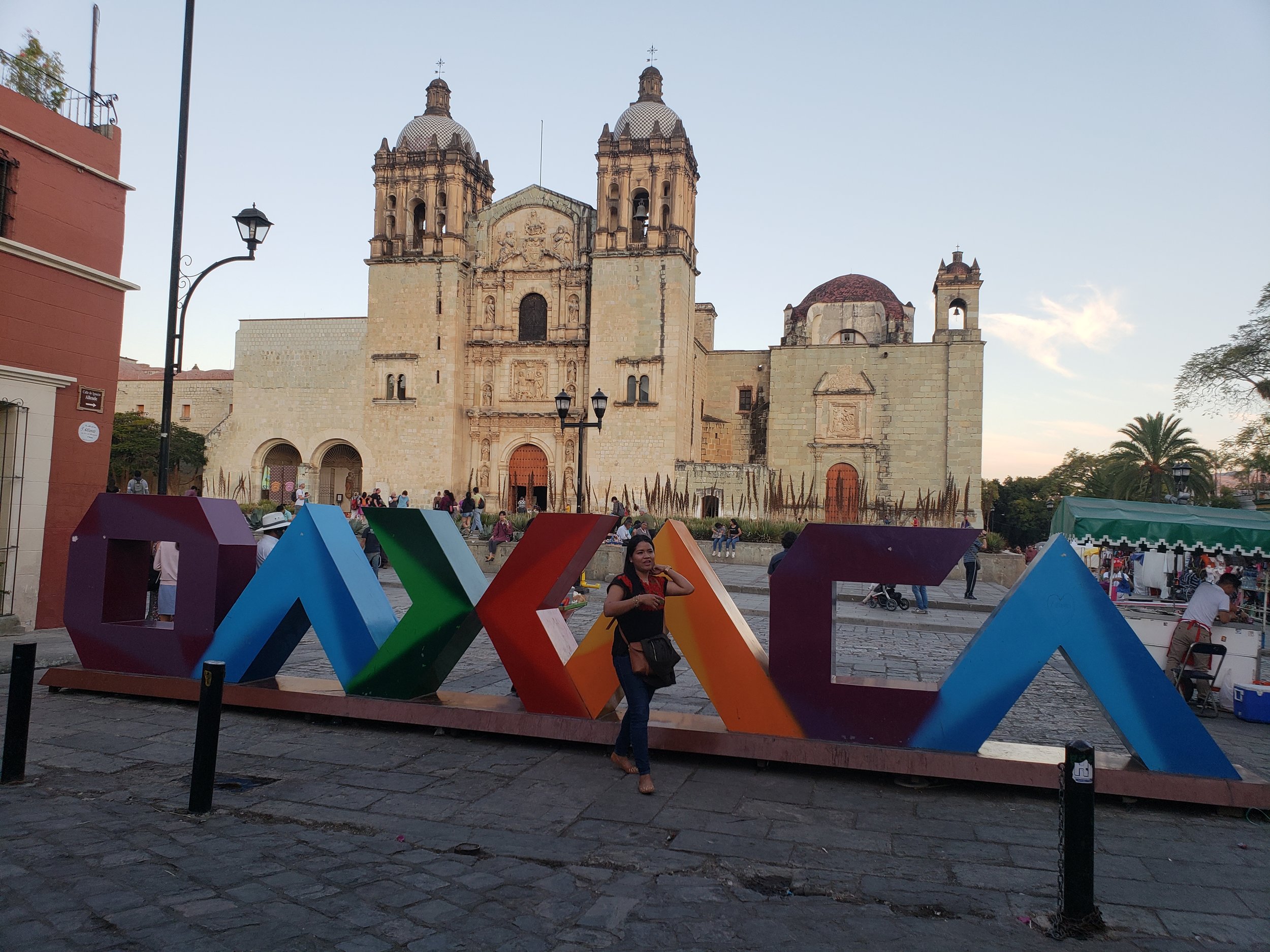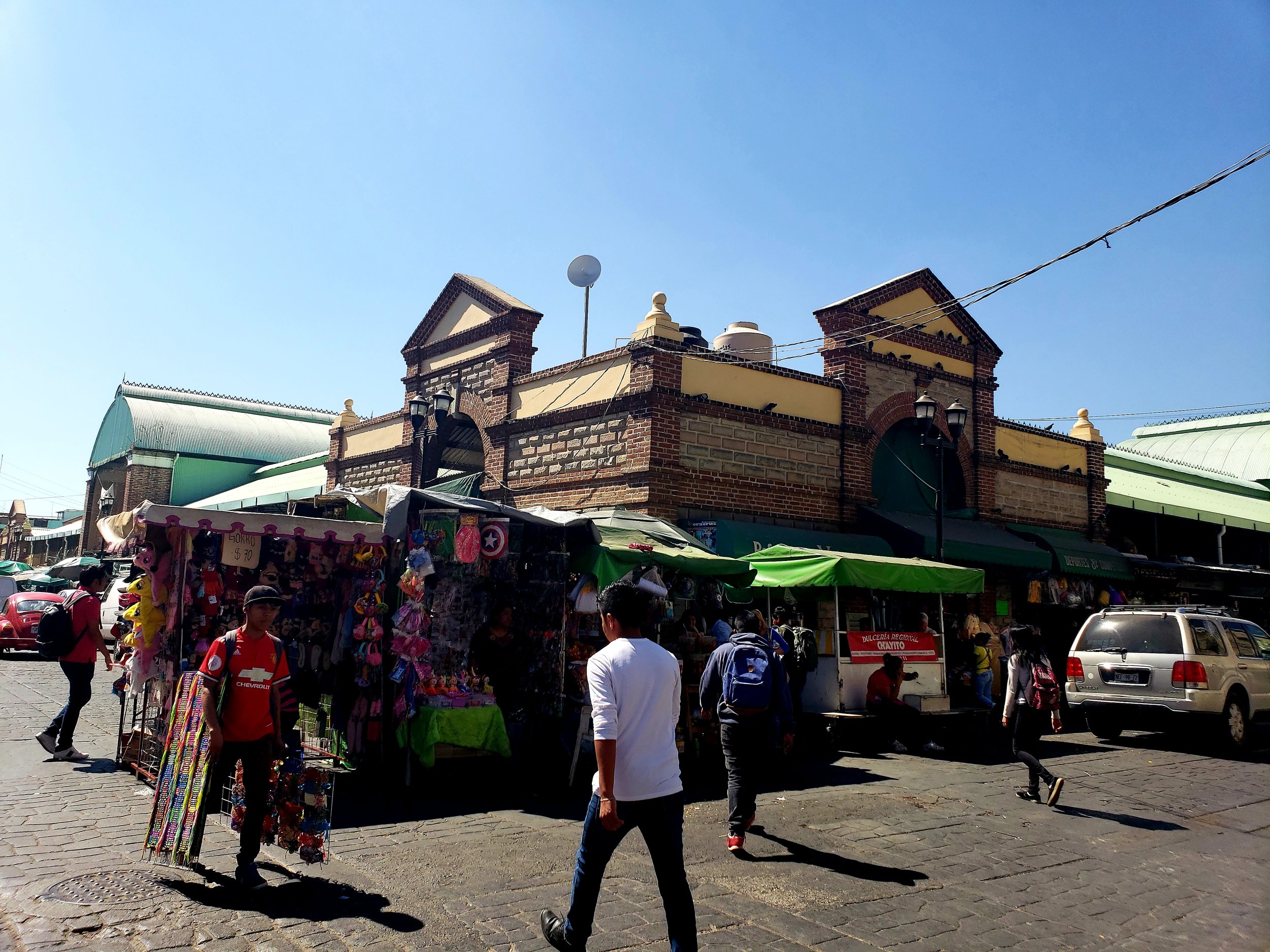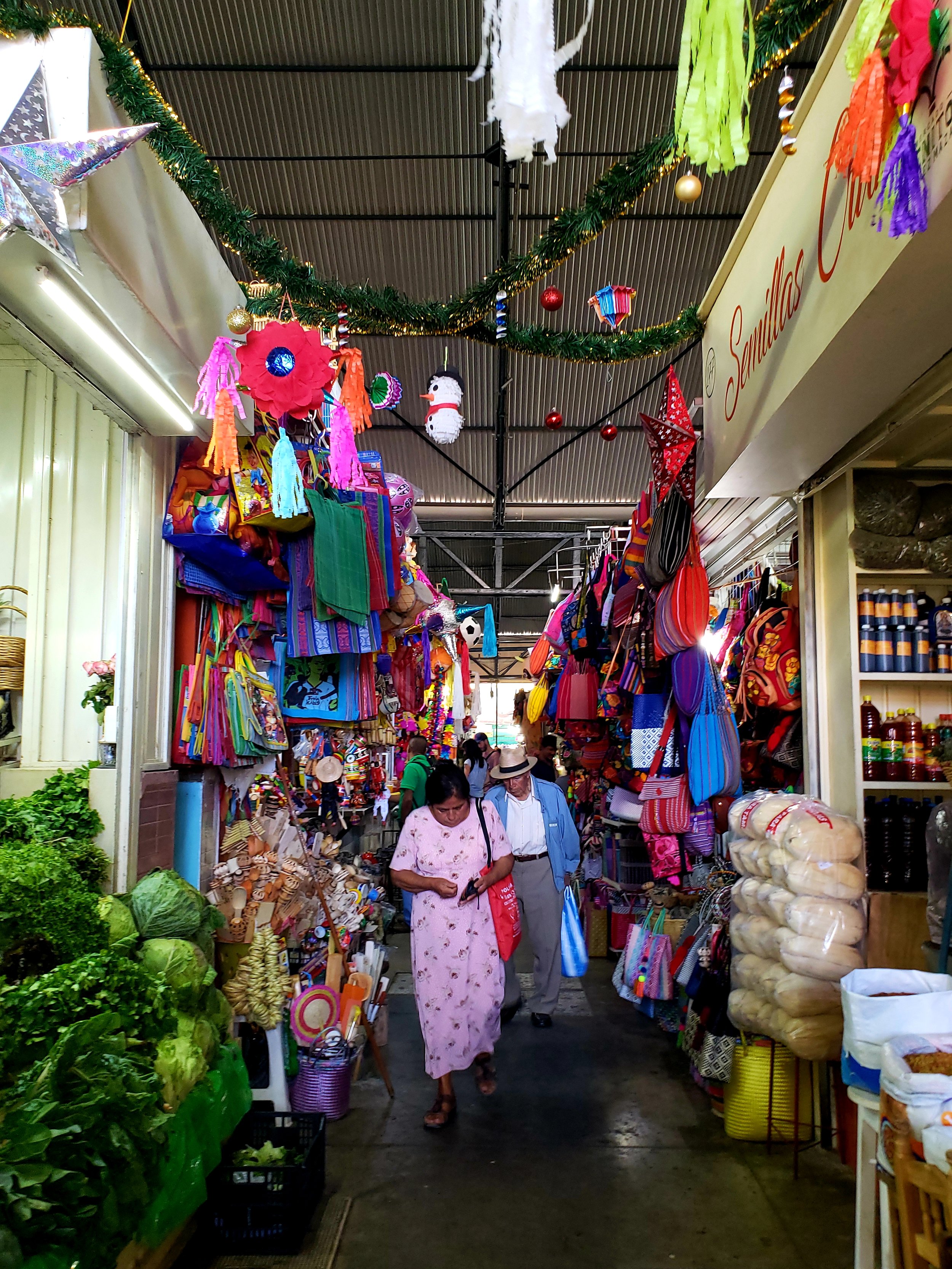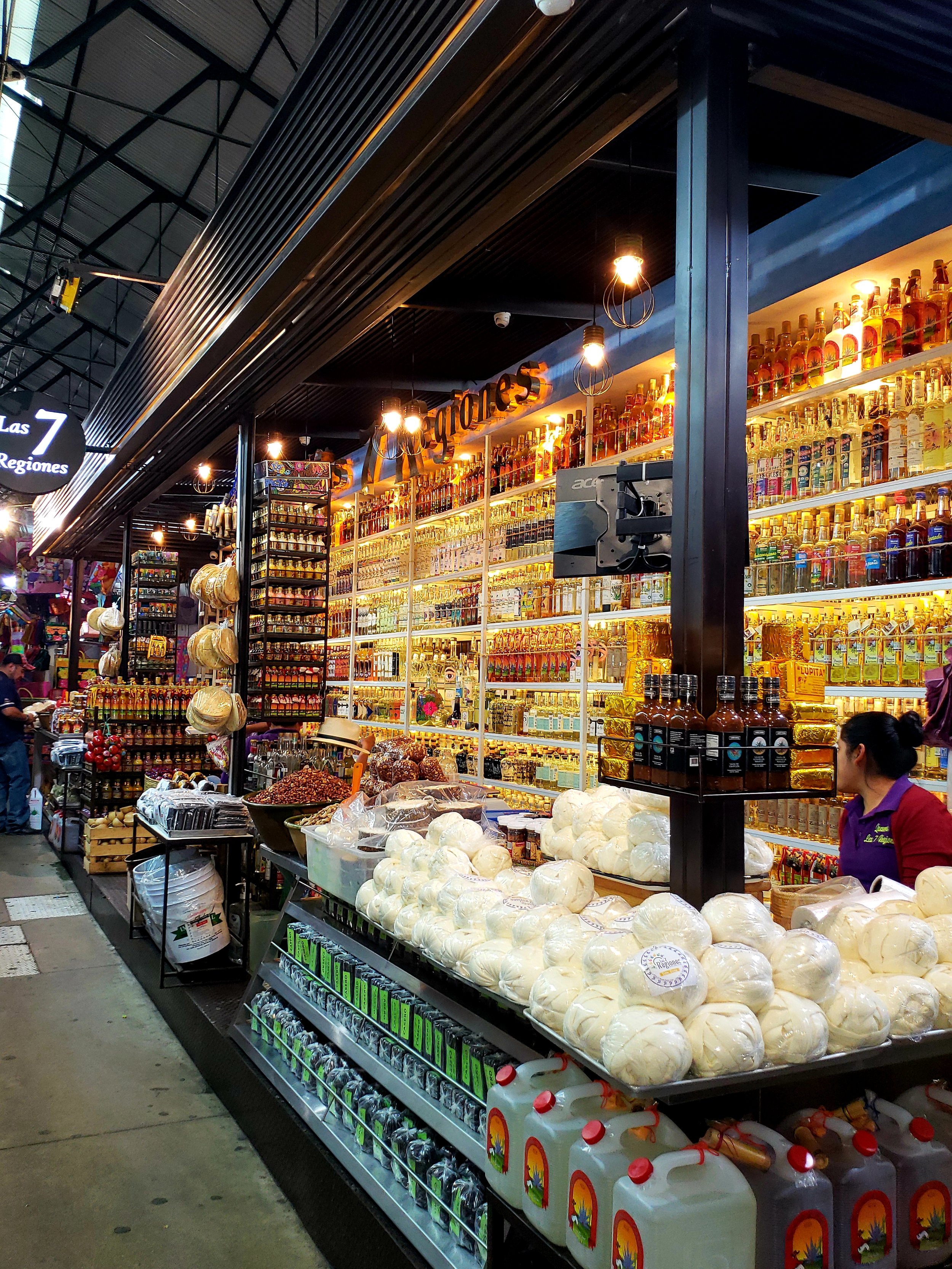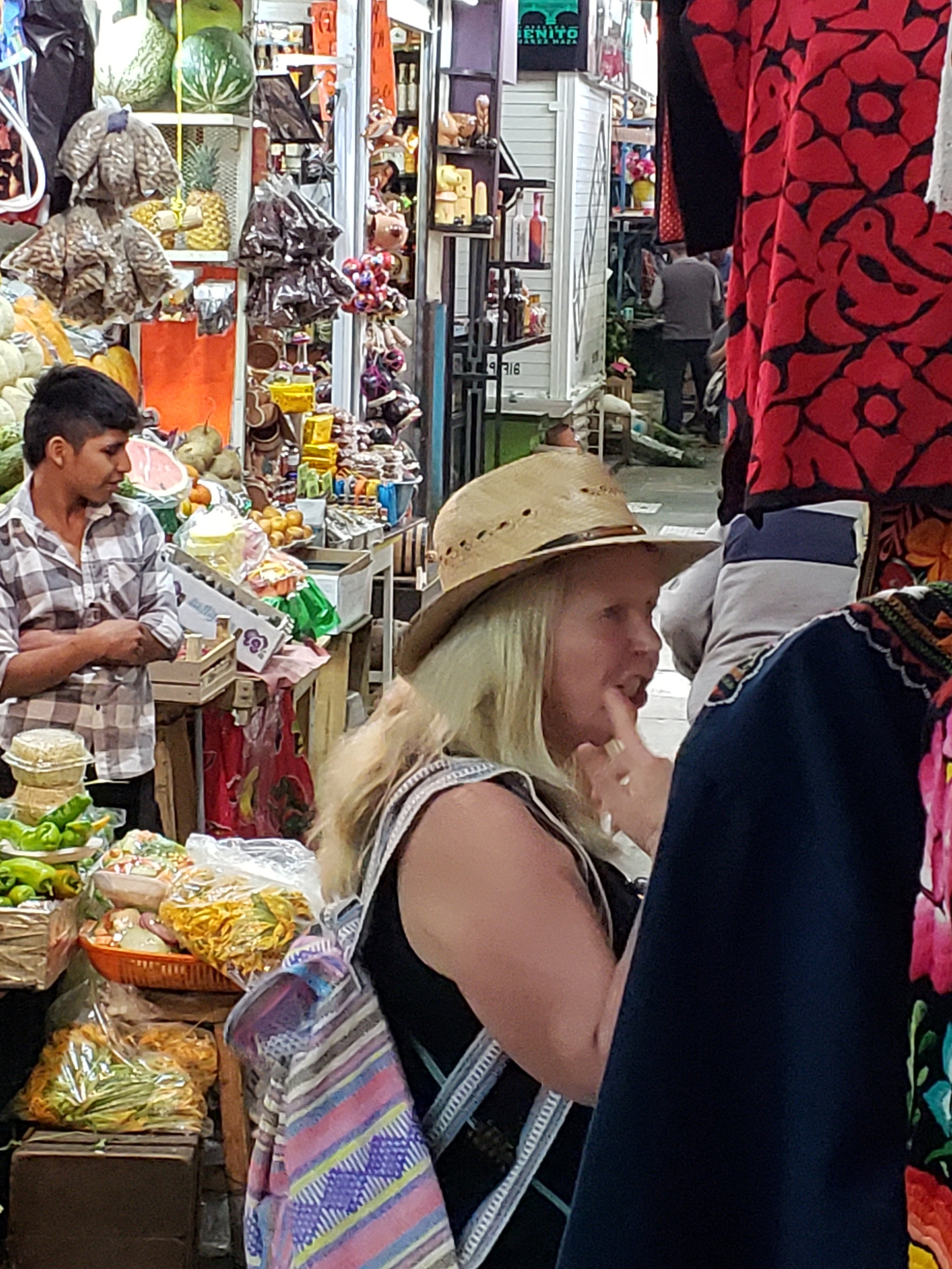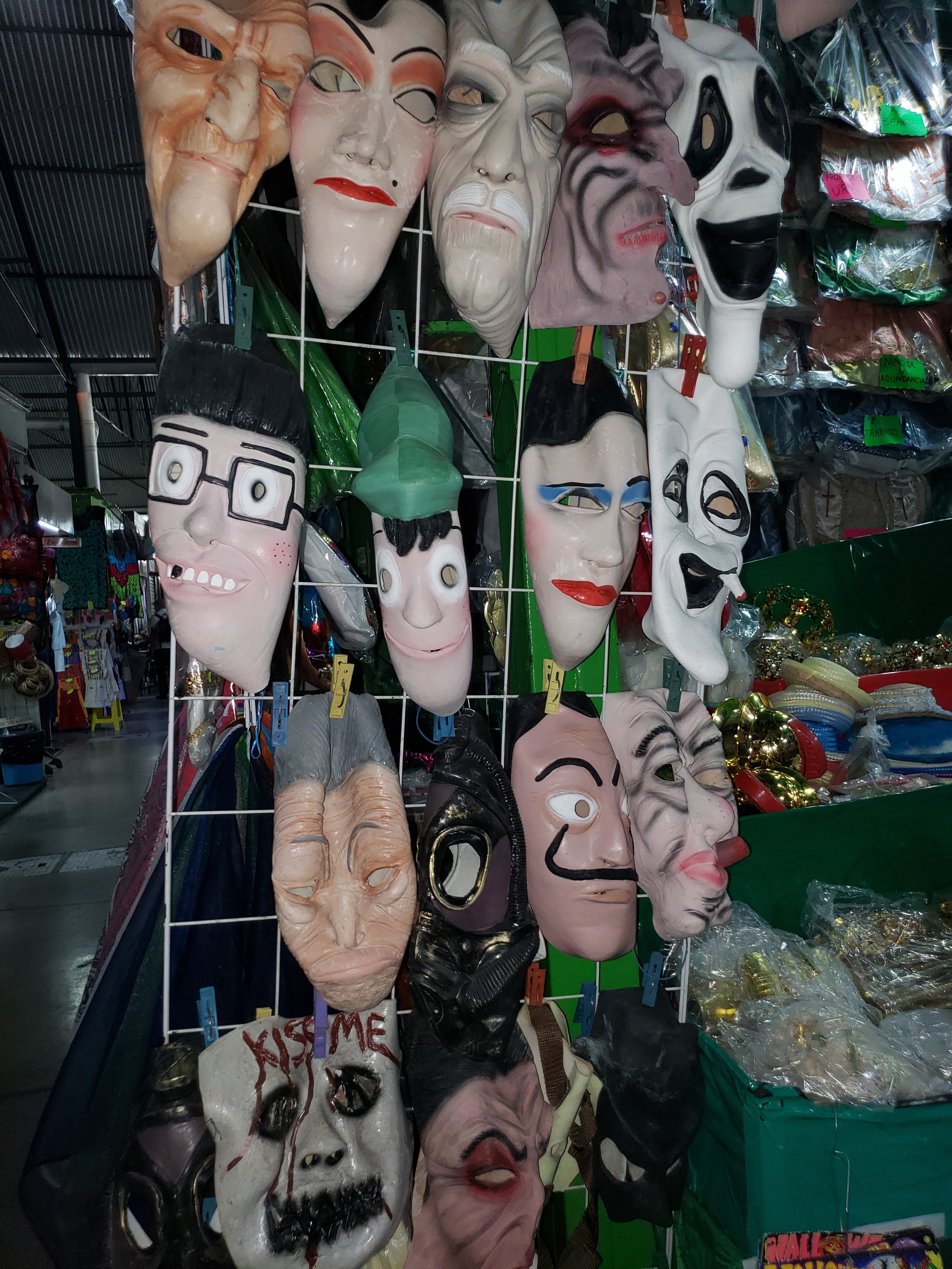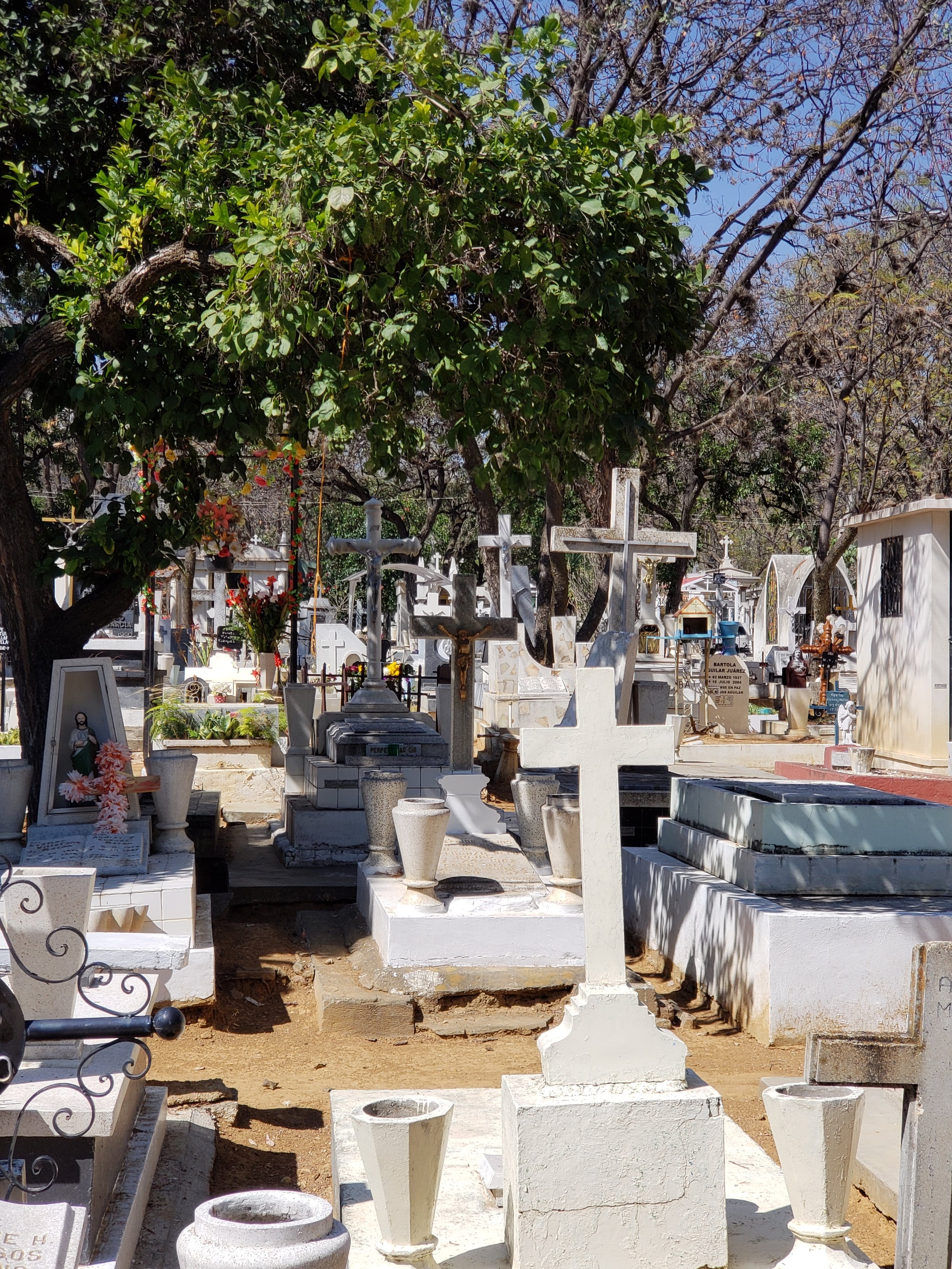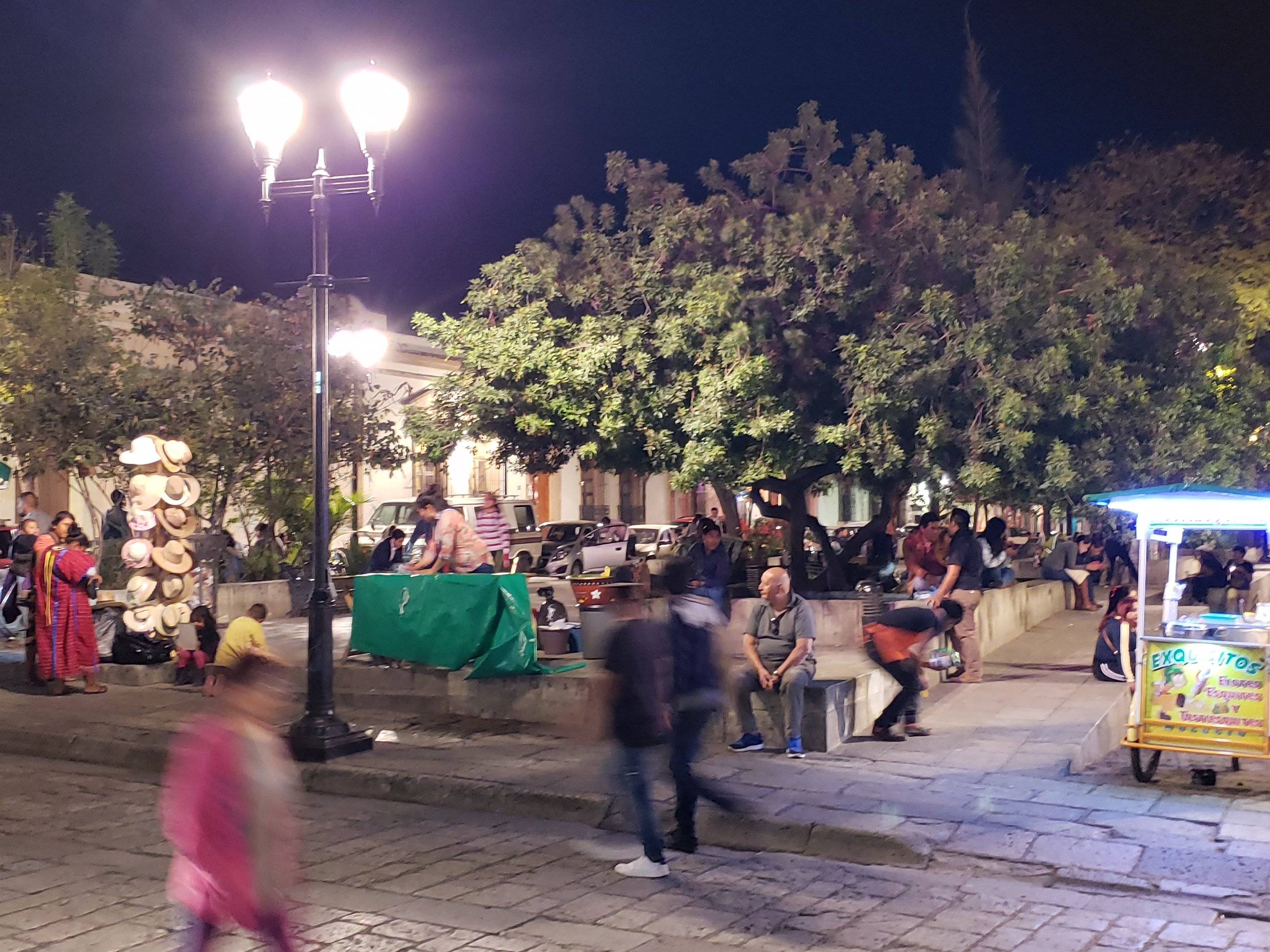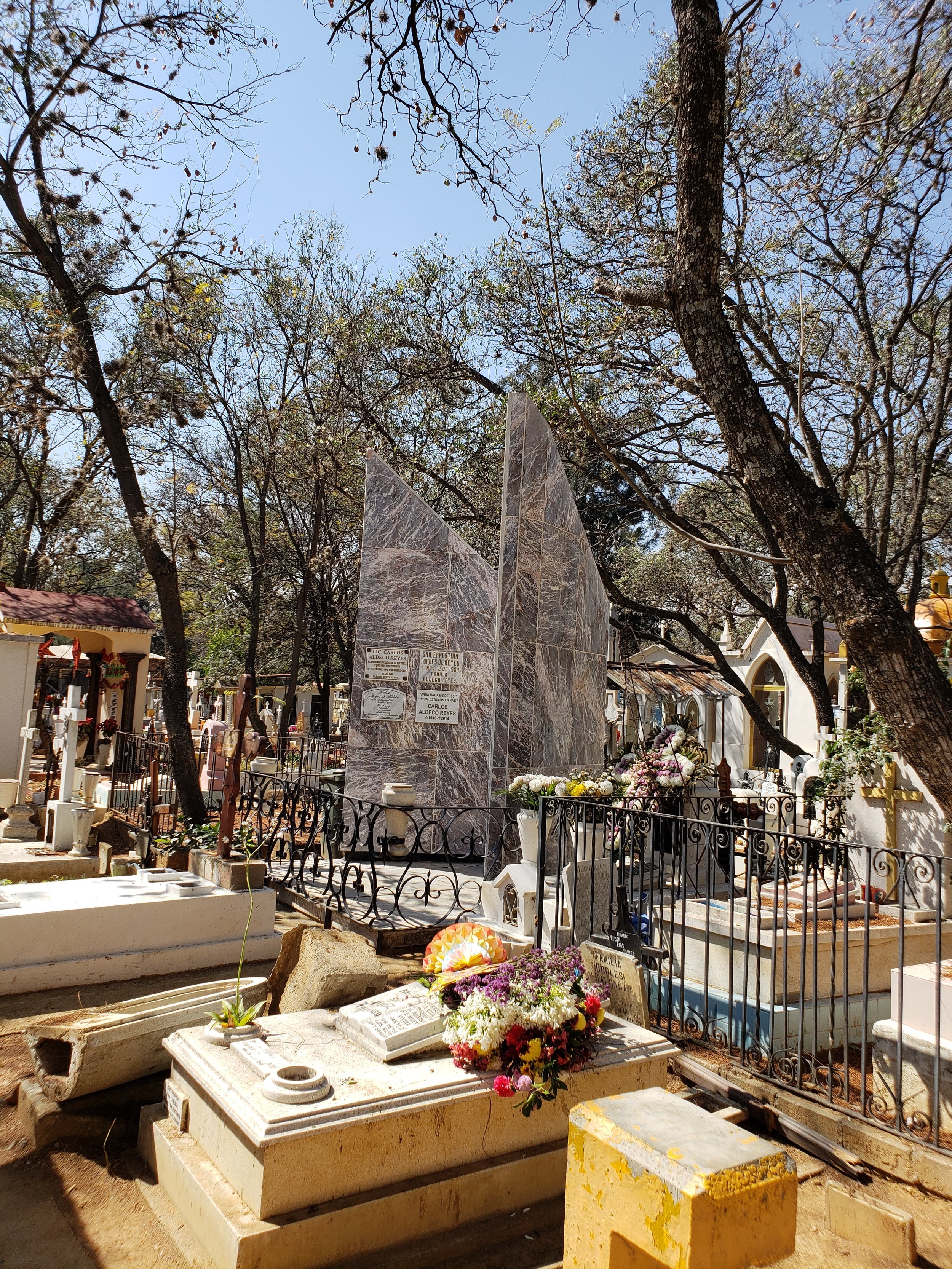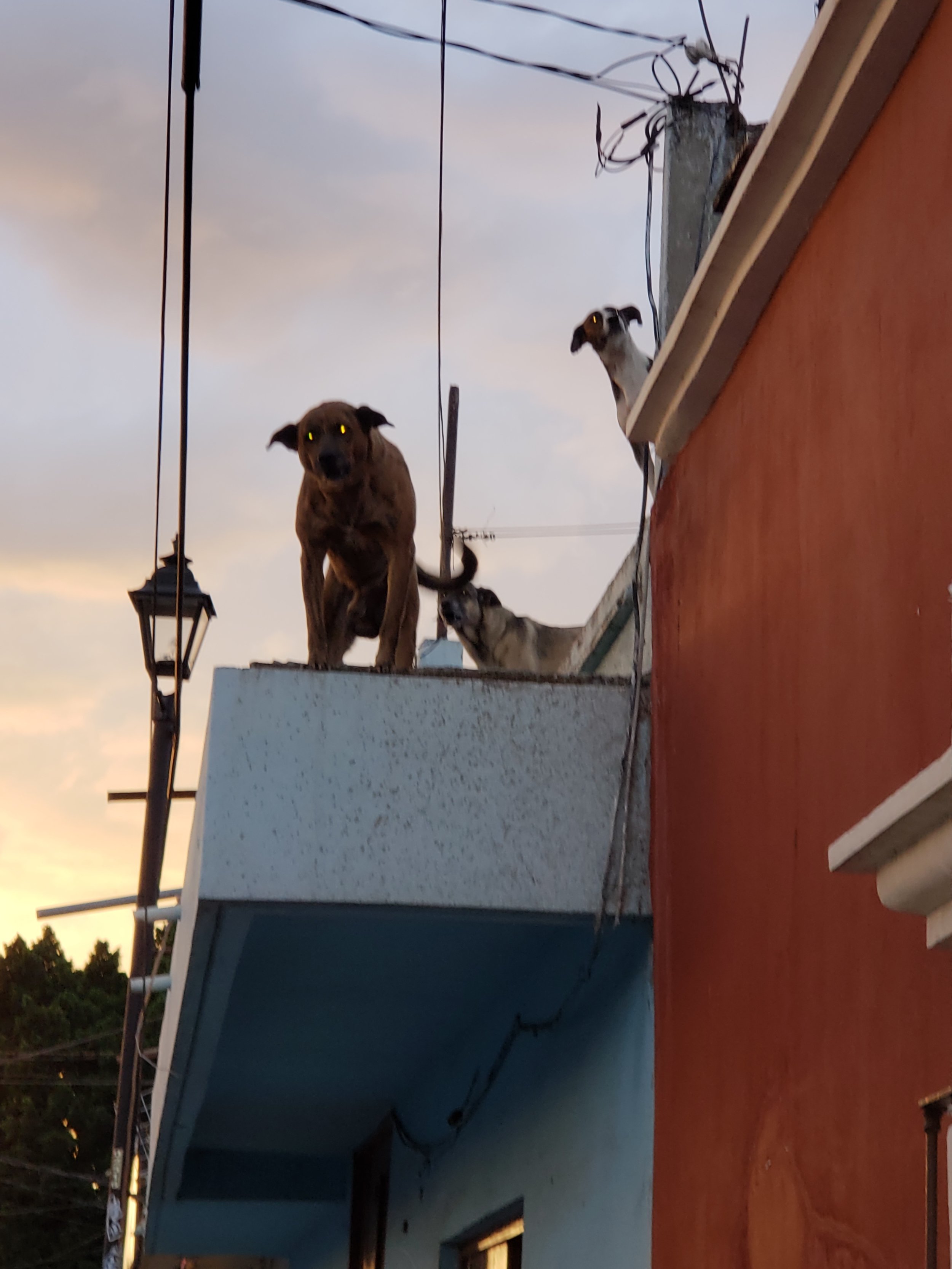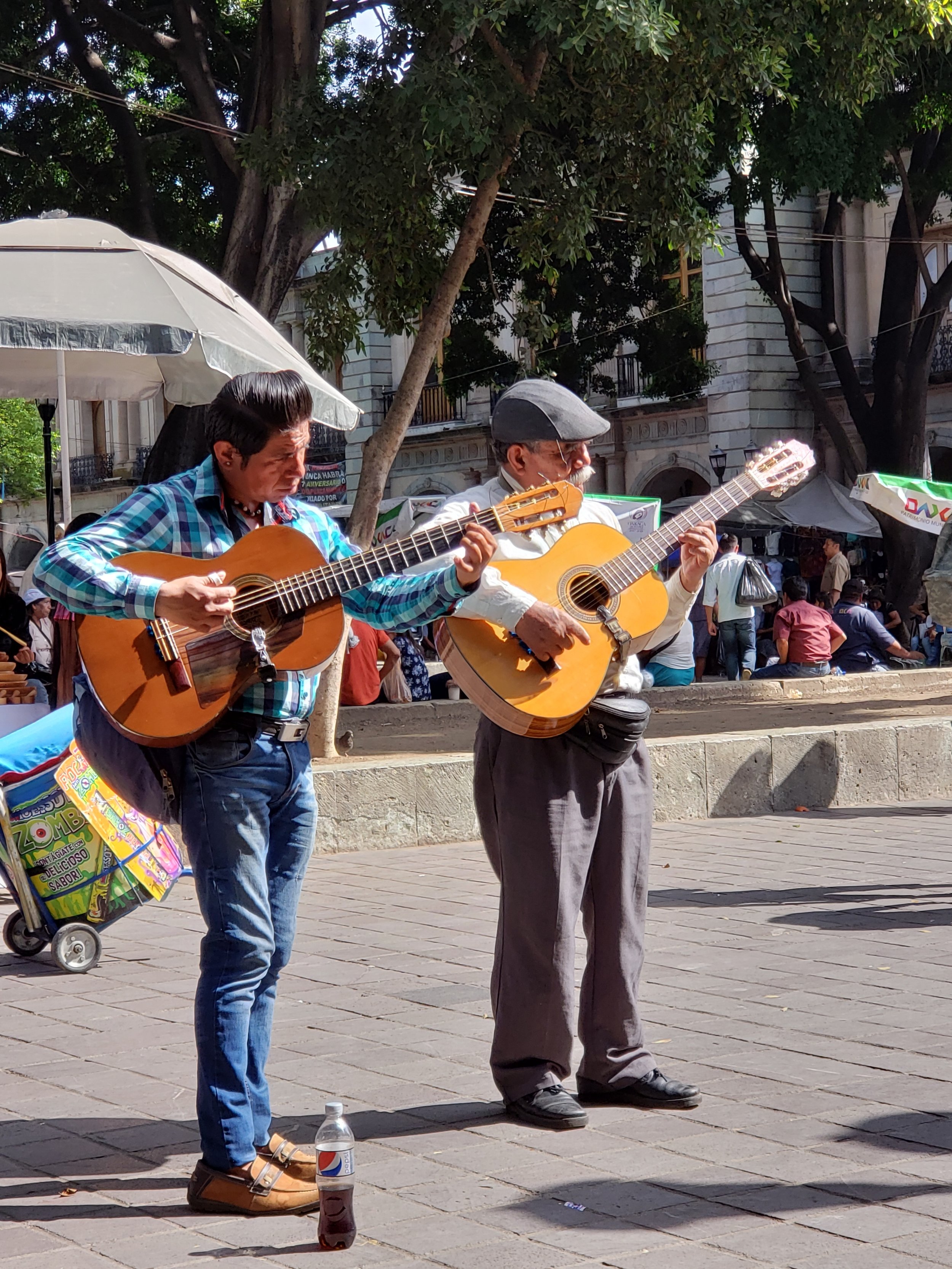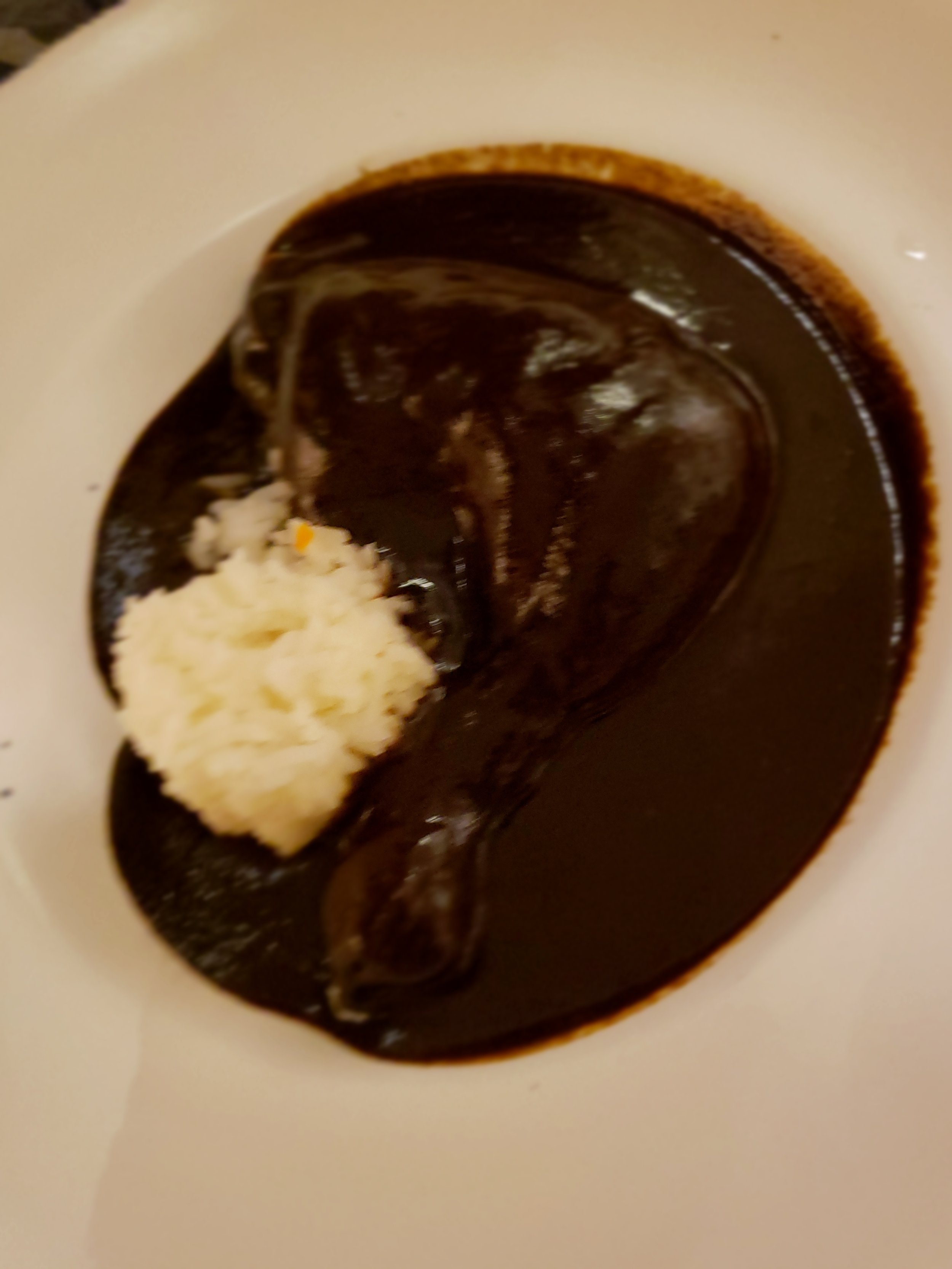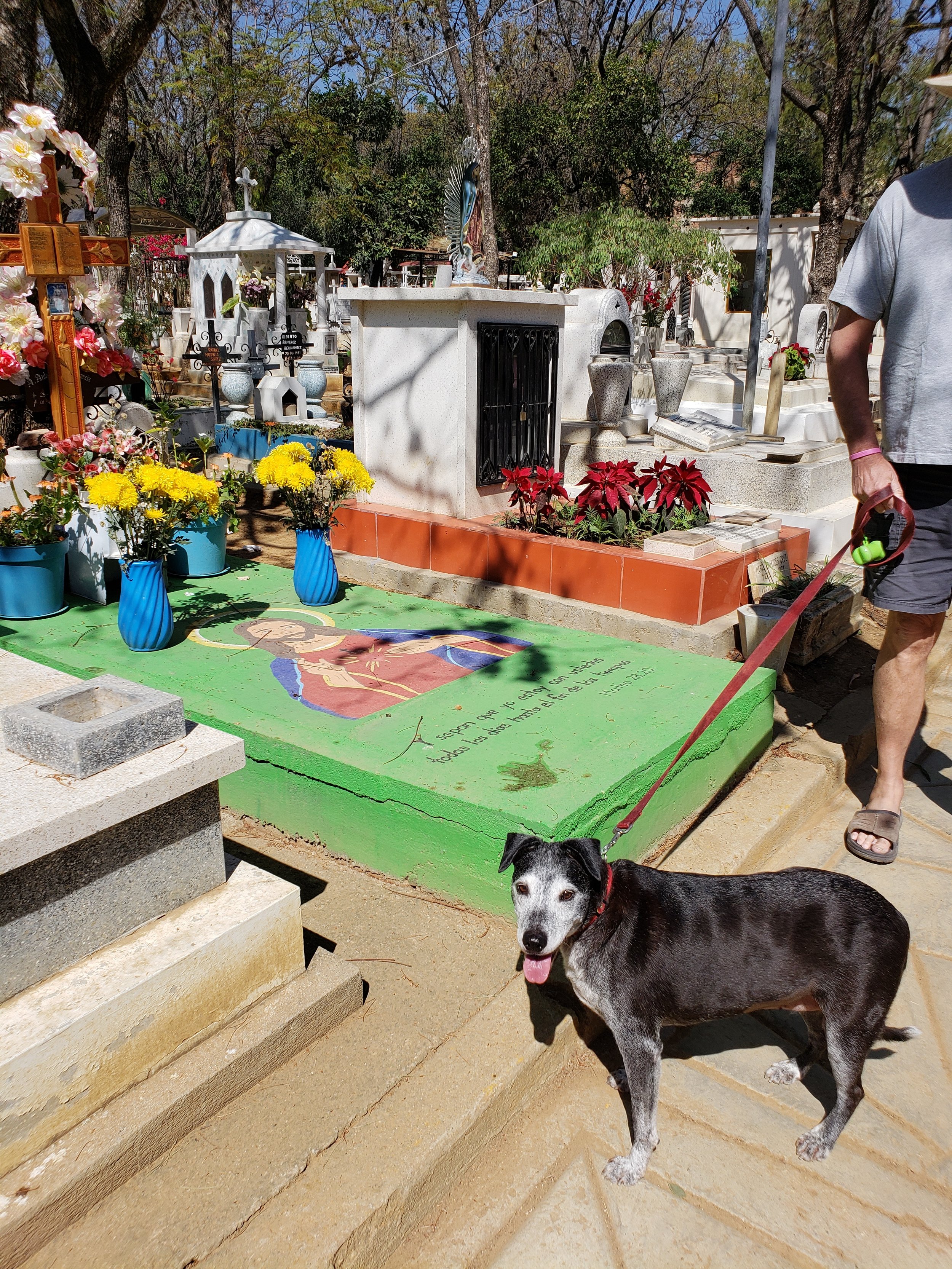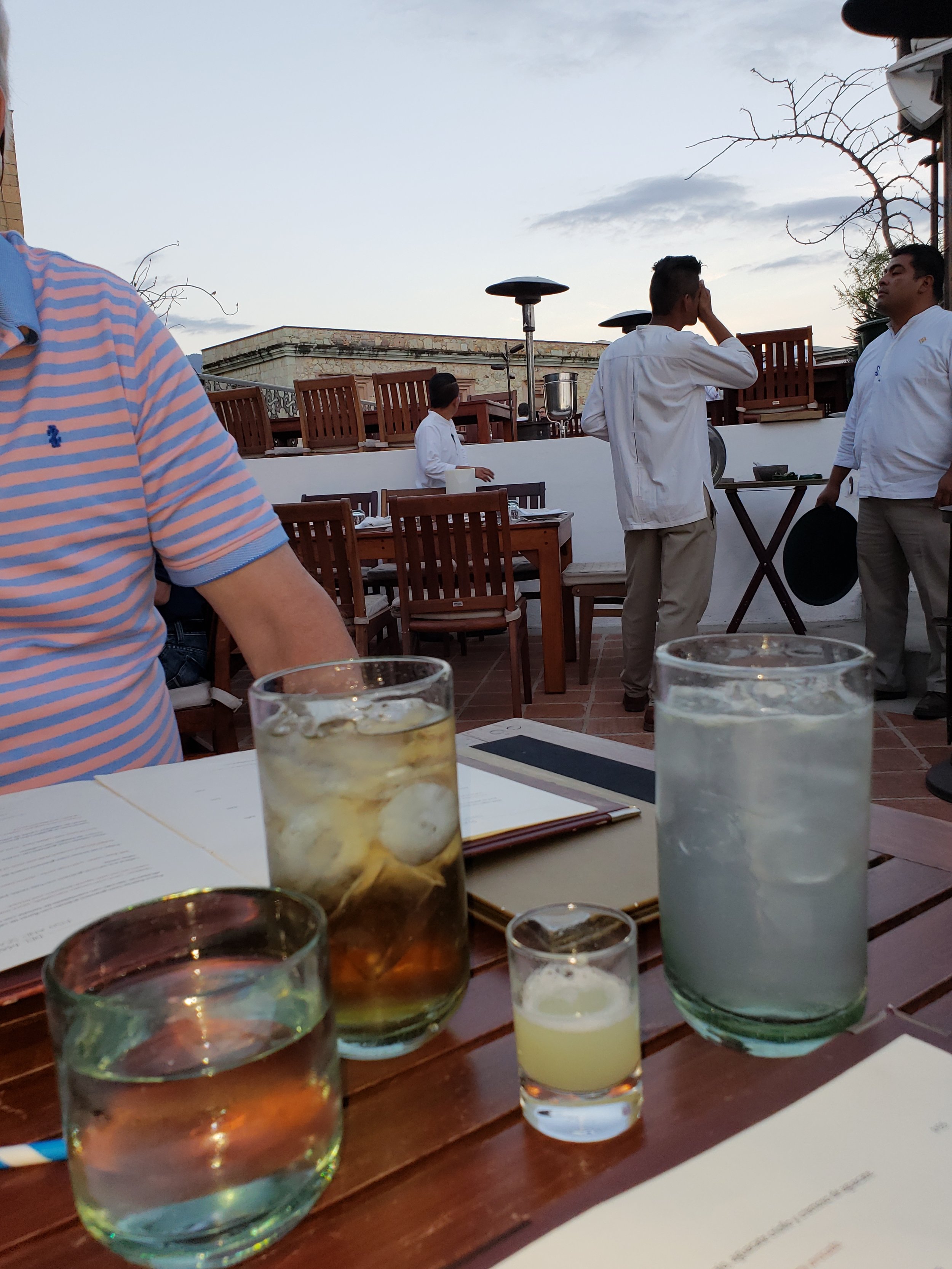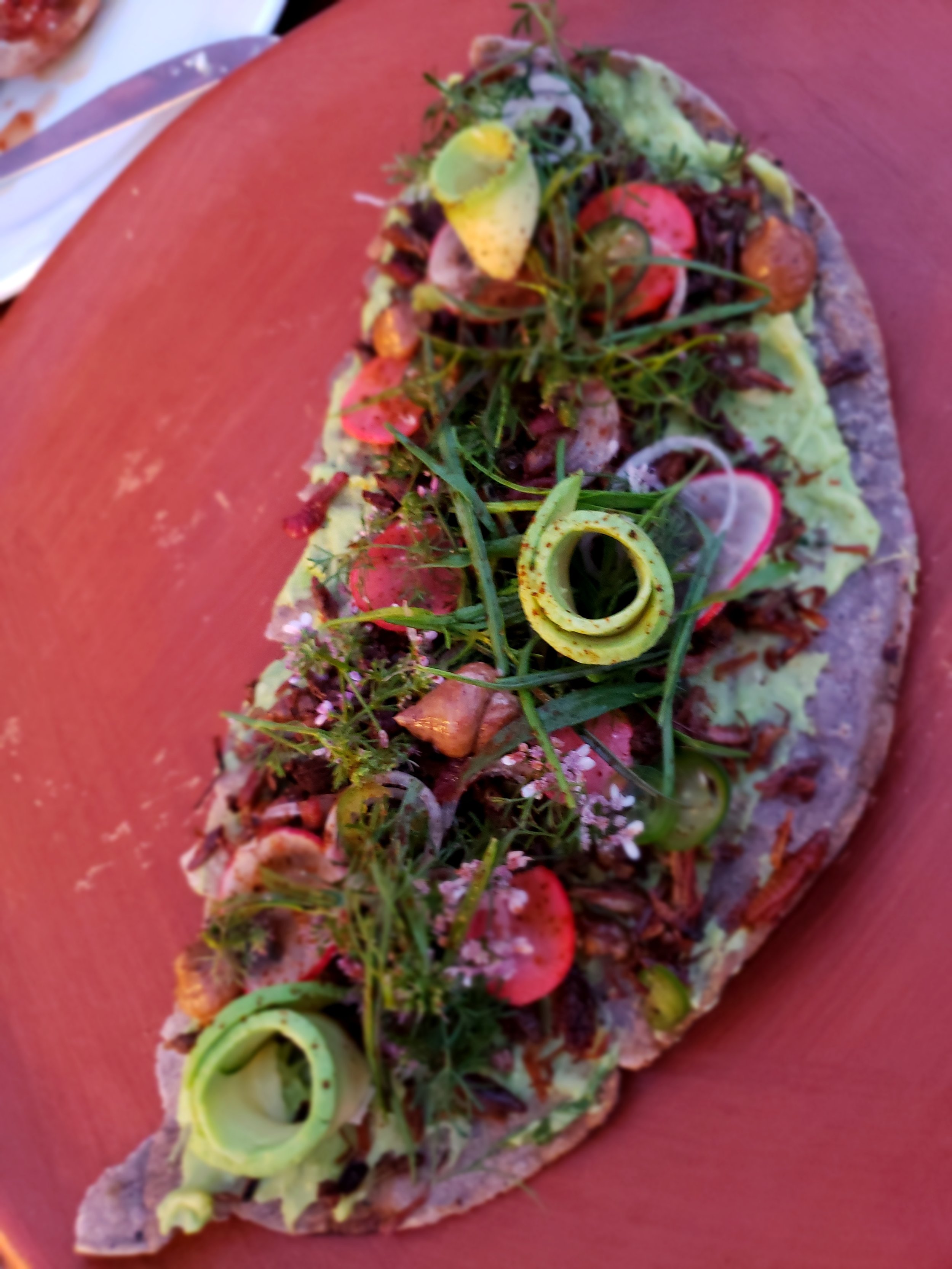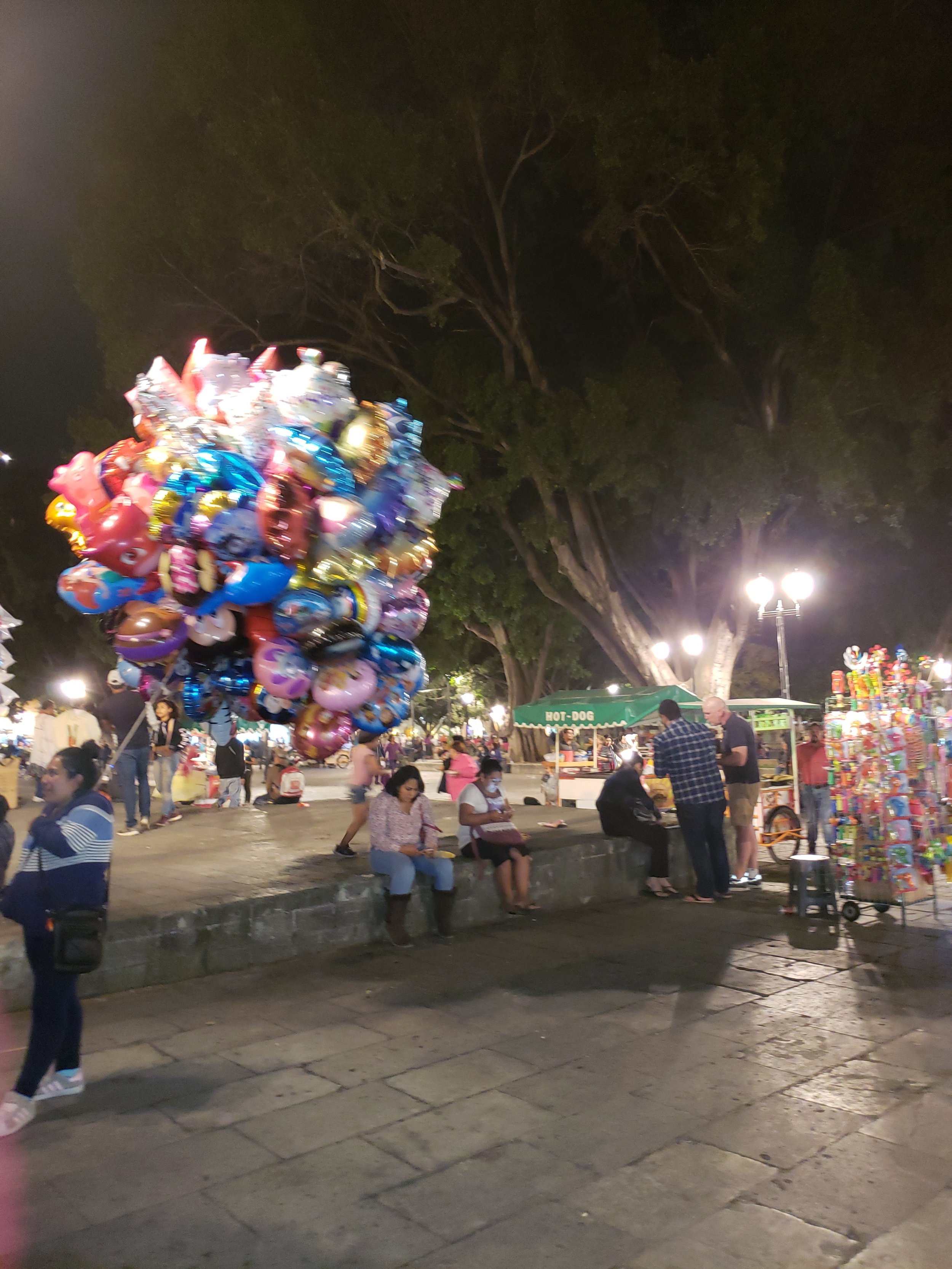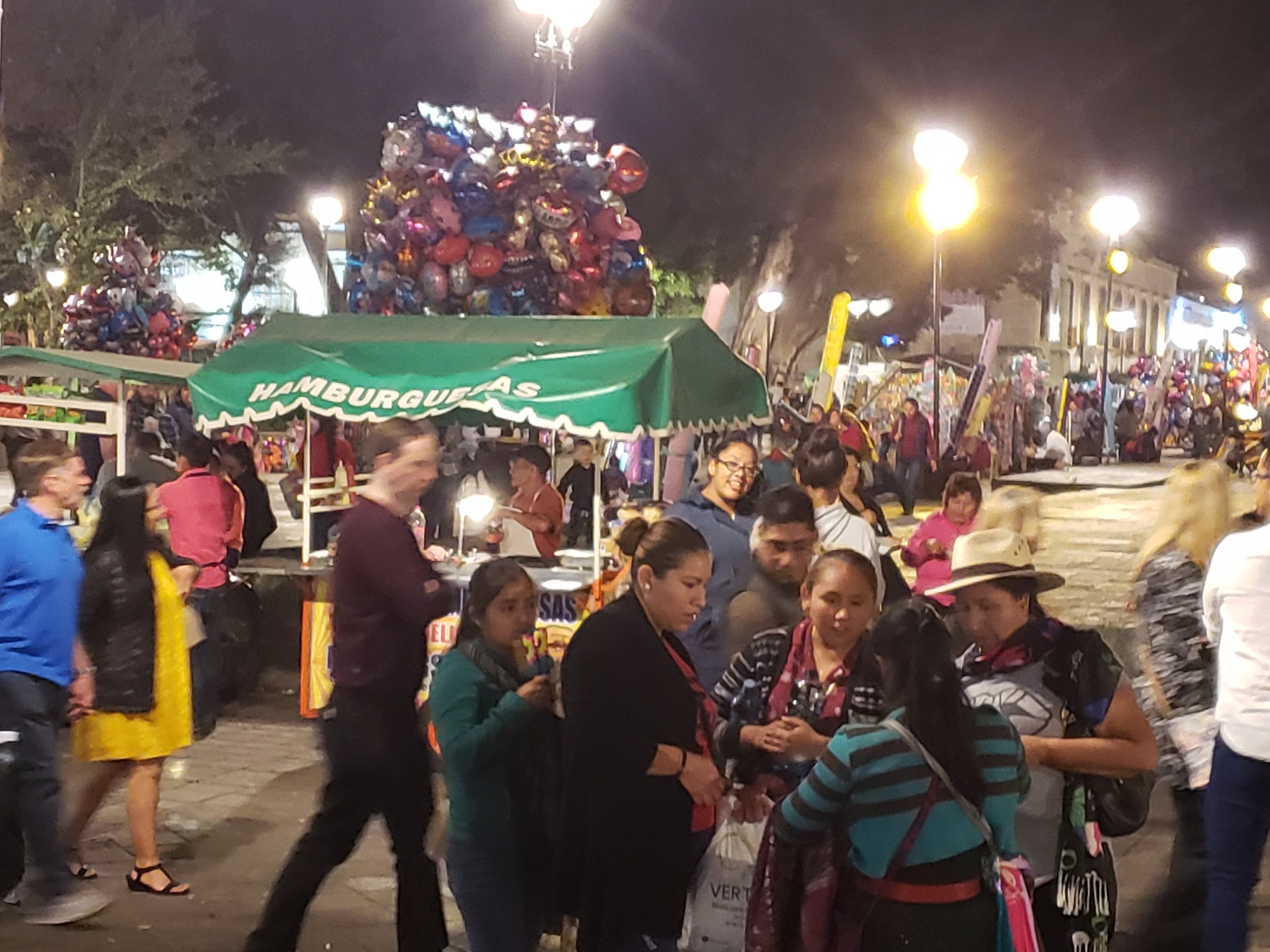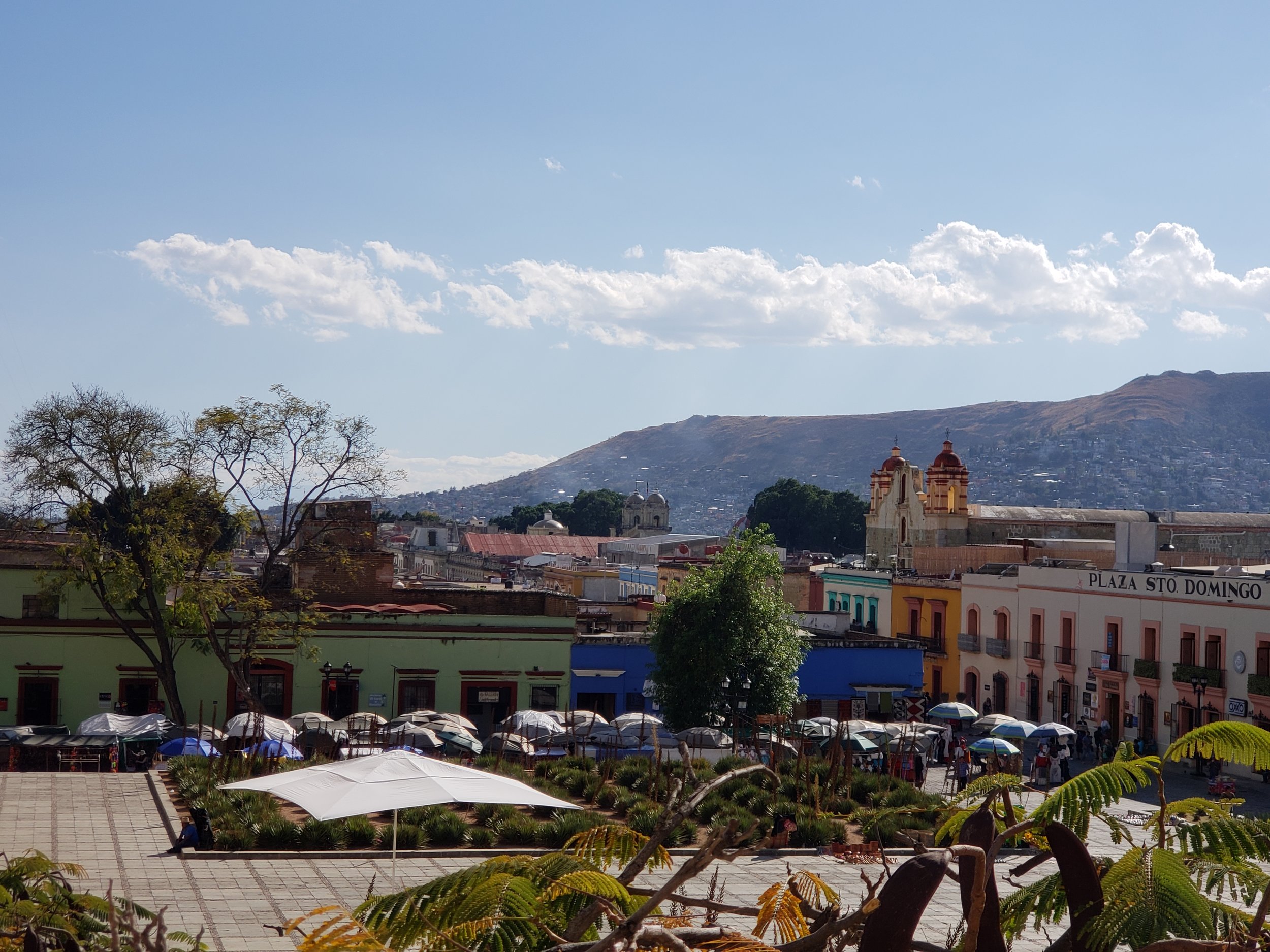On the Road in Mexico: The Highlights - Part 2
It’s been a month since my last post and two months since we’ve been home. Obviously, I’m not setting any records for writing output. In my defense, though, it’s tough to focus when your foreseeable future is in the hands of people who are looking or not looking at your house. I’ve always tried to avoid this situation and, more often than not, been successful. Now though, it seems unavoidable. Please, someone buy our house!
Driving to Oaxaca
Leaving Pueblo on our way south, we got caught in morning traffic heading east toward Vera Cruz. We weren’t going that far into the mountains before turning south, but we did get up high enough to be able to look back and see the smog hanging over the city. It really looked like L.A. in the 1980s. That kind of brown, gritty air that just hung somewhere between the top of Popo and ground level. But after turning south toward Oaxaca the air cleared, the traffic thinned and our smiles returned.
The drive down - by that I mean south because Oaxaca isn’t actually much lower than Puebla in elevation - was pretty and uneventful. Lots of mountain and valley vistas that were different enough to keep Lydia’s focus off the fact that she really hates mountains. The colors were mostly high desert tans and browns. The air clear and dry.
Our first highlight came as we entered the city of Oaxaca. The northern suburbs wind down a fairly narrow valley that widens as you near the city center. We were following Bob and Caroline as the traffic thickened, late afternoon on a Friday. As we approached our first turn I could see what looked like gridlock. Sure enough, several buses were blocking the intersection and the stoplight was cycling without vehicular movement. Our navigation was telling us to turn right, buses were everywhere, but no one was budging. I recall being on the verge of panic, but then the absurdity of the traffic overwhelmed my sense of dread and we just laughed. How we found our AirBnB I’m not really sure. Somehow we made our right-hand turn, followed by some more turns. The first place we stopped wasn’t it - believe it or not, there are two streets near the center of Oaxaca with the same name - then someone helped us and we made it. What a relief!
Tule
We were in Oaxaca for five days, more than enough time in my book. My highlight was the day we hired a guide to take us into the hinterlands. We drove east into the mountains. Our first stop was a small town not far from Oaxaca named Santa Maria del Tule. The entire town is built around a 2,000 year old cypress tree known as El Arbol del Tule. This tree is gigantic, one of the thickest in the world. Standing under it I felt a calming reverence, kind of like looking down into the Grand Canyon, or more apropos, communing with Angel Oak near Charleston or the lone cypress on the Monterey Peninsula in California.
Dainzu
Our next stop was a small archaeological site called Dainzu. Excavated over the last 50 years or so, this place was home to the Zapotecas, a civilization like the Yucatan’s Maya. It dates back at least 2500 years, and compared to other, more popular sites, it is eerily lonely, perched alone on dusty hillsides southeast of Oaxaca. Because it is rarely visited, Dainzu doesn’t appear to have officials on site, so we were able to get up close to the ruins and even climb on them.
Mitla
After Dainzu we drove to Mitla, the religious center of the ancient Zapotecas and home to the famous mozaics they created, found at no other site in Mexico. Having now seen so many ancient ruins of various civilizations, it’s really hard to keep them separate in my mind. What I remember most about Mitla is that the modern town, which dates back to Spanish colonial days, literally surrounds the ruins. The other thing I remember from our short time in Mitla actually goes back to something another guide said on the drive to Guanajuato. We were talking about the differences between European/indigenous interaction in the U.S. and Mexico. He reminded us that the biggest single difference was that the Spanish encountered entrenched civilizations comprised of millions of people and thousands of years of history. Meanwhile, the English met small, typically isolated tribes of hunter gatherers. Mitla reinforced these facts.
Hierve El Aqua
After lunch our guide took us up into the mountains above Mitla. Here, at the end of a long unpaved track, we came upon Hierve El Aqua (“water that boils”). I’ve included many photos here because this site is very hard to describe. First of all, it’s kind of in the middle of nowhere perched high above the floor of a very narrow valley. It’s name refers to the calcified face of two cliffs that tumble down the mountainside and resemble waterfalls. In actuality, there is a mineral spring that originates in this place, first forming a couple of infinity-edged ponds before seeping down the cliff face, leaving the white mineral content behind. Of course, any site this spectacular has been discovered, and there is a profitable little tourist industry surrounding this natural wonder. This is definitely worth the effort, for the views and pictures if nothing else. Be sure to go slow enough down the mountain to get photos of the oxen and the burros coming up the road carrying mezcal.
Mezcal
Speaking of Mezcal, our last stop on the way back to the city was a Mezcal distillery, El Rey de Matatlan. There are dozens of these throughout the state of Oaxaca, the home of Mezcal. If you haven’t tried it you should. It’s tequila’s smoky cousin. I think because of it’s smoky flavor it’s not my favorite, but it was fun to taste the different levels they make and we did buy a bottle of a mezcal-based liqueur.
Oaxaca
Our 5 day stay here - less the one day detailed above - is pretty much a blur. In a way I am disappointed because I think I was looking forward to it more than the other cities we visited. Instead, we were really ready to get back on the road. In part, it was because Lydia wasn’t feeling well for the last few days of our stay. Another factor was the location of our apartment. It was about a mile from the zocalo (city center) and there weren’t a lot of different routes to take. We like to walk as much as possible, but with Lydia not feeling great we needed to be aware of bathrooms, which weren’t plentiful, especially between our apartment and downtown. At any rate, Oaxaca didn’t end being one of our favorite places.
I do remember the immense city market, which is an indoor affair with everything from wedding dresses to spices to prepared food stalls. The market, like others we visited, just completely fills your senses. Lydia was mesmerized, while I was a bit intimidated. But it was certainly memorable.
Equally memorable, and in a way chaotically similar, was the giant city cemetery just up the street from our apartment. Mexican cemeteries in general are wondrous places - Mexican society’s relationship with and celebration of death is so different from ours, and maybe a little healthier - filled with sights you just won’t find anywhere else. The only downside to our visit with Maya was that once we were well into its maze, Lydia felt the urge and we seemed to run into dead end after dead end (pun intended) trying to find ou way out.
I also have a vivid recollection of eating insects for the first time. We were sitting on the rooftop of one of Oaxaca’s fancier restaurants. We were going to go earlier with Bob and Caroline, but Lydia had a little intestinal set back, so we begged off. Then a little while later she felt better so we decided to go find something to eat. Well, we ended up at the same restaurant just as Bob and Caroline were finishing up. They suggested an appetizer, so we gave it a try. I know it included fried grasshopper, crunchy with a slight nutty taste. There were also grubs. I recall eating one grub, not to be tried again.
Oaxaca is known for its food, especially mole. Though I liked mole in the past, I found it to be way too much of a good thing. Not only is it rich, but the caffeine in the chocolate disrupted my sleep. unfortunate I found that avoiding mole isn’t the easiest thing to do in Oaxaca.
With Lydia feeling under the weather, we didn’t get to see the city as much as we would have liked. Bob and Caroline were out all day every day and they loved it. When we did get out and about, though, I was caught by the differences between Oaxaca and San Miguel, both of which are tourist meccas. Oaxaca, at least to me, seemed more about its indigenous roots and less about its colonial ones. Though it certainly is a tourist must see, it wasn’t as polished a tourist destination as San Miguel. Fewer ex-pats. Less English in the ether. I really had a feeling that I was in Mexico. And for that reason, I hope Lydia and I find ourselves there once again.

